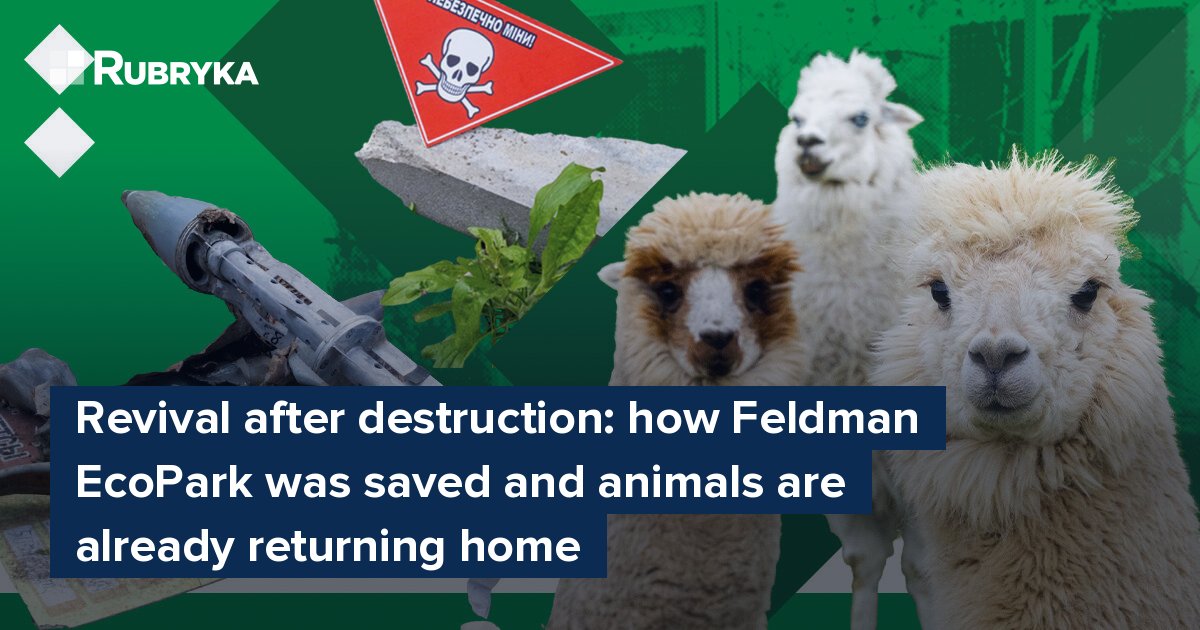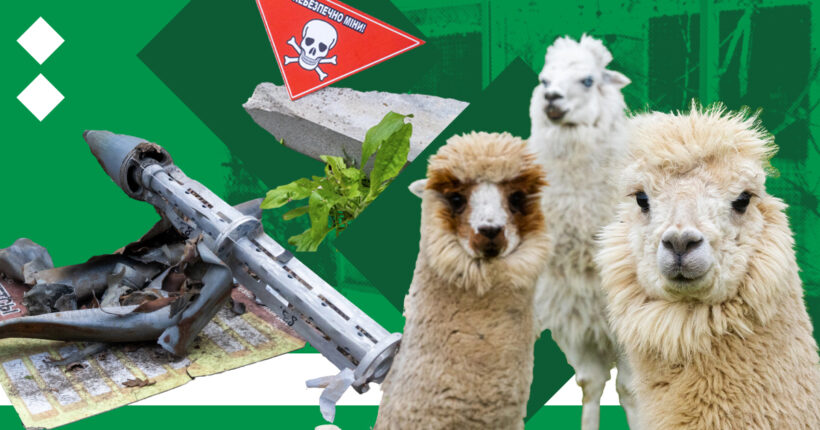
What is the problem?
Feldman EcoPark is a green zone and animal sanctuary open to the public free of charge. At least it had been like that until the spring of 2022. On the outskirts Kharkiv, Ukraine's second largest city, Feldman EcoPark became one of the first areas to be hit by shelling when Russian forces invaded the city.
Animals began to be evacuated immediately, and on March 8, two park employees who were feeding the animals were killed by Russian bombs. By the end of the month, most of the animals were evacuated, and some remained. There was a dire lack of vehicles and volunteers available to evacuate them. The EcoPark's team issued a statement in desperation: the remaining animals which could not be evacuated, were expected to be euthanized.
This statement saved the animals. As the EcoPark team told Rubryka, a flurry of messages soon poured in from those willing to help save the animals. This is how the story of animal rescue began to take shape, which became known far beyond the borders of Ukraine. Rubruka shares the story of how the animals were rescued and how they are gradually returning home.
What does Feldman EcoPark look like now?
When Rubryka journalists visited the Feldman EcoPark in the Kharkiv region, we were once again shocked by the brutality of Russian troops. Traces of bullets on the glass walls of enclosures, skeletons of animals that tried and failed to escape, cages destroyed by mines, metal roofs flung meters away and torn apart by fragments of shells — this is what one of the favorite places for recreation of Kharkiv residents looks like now.
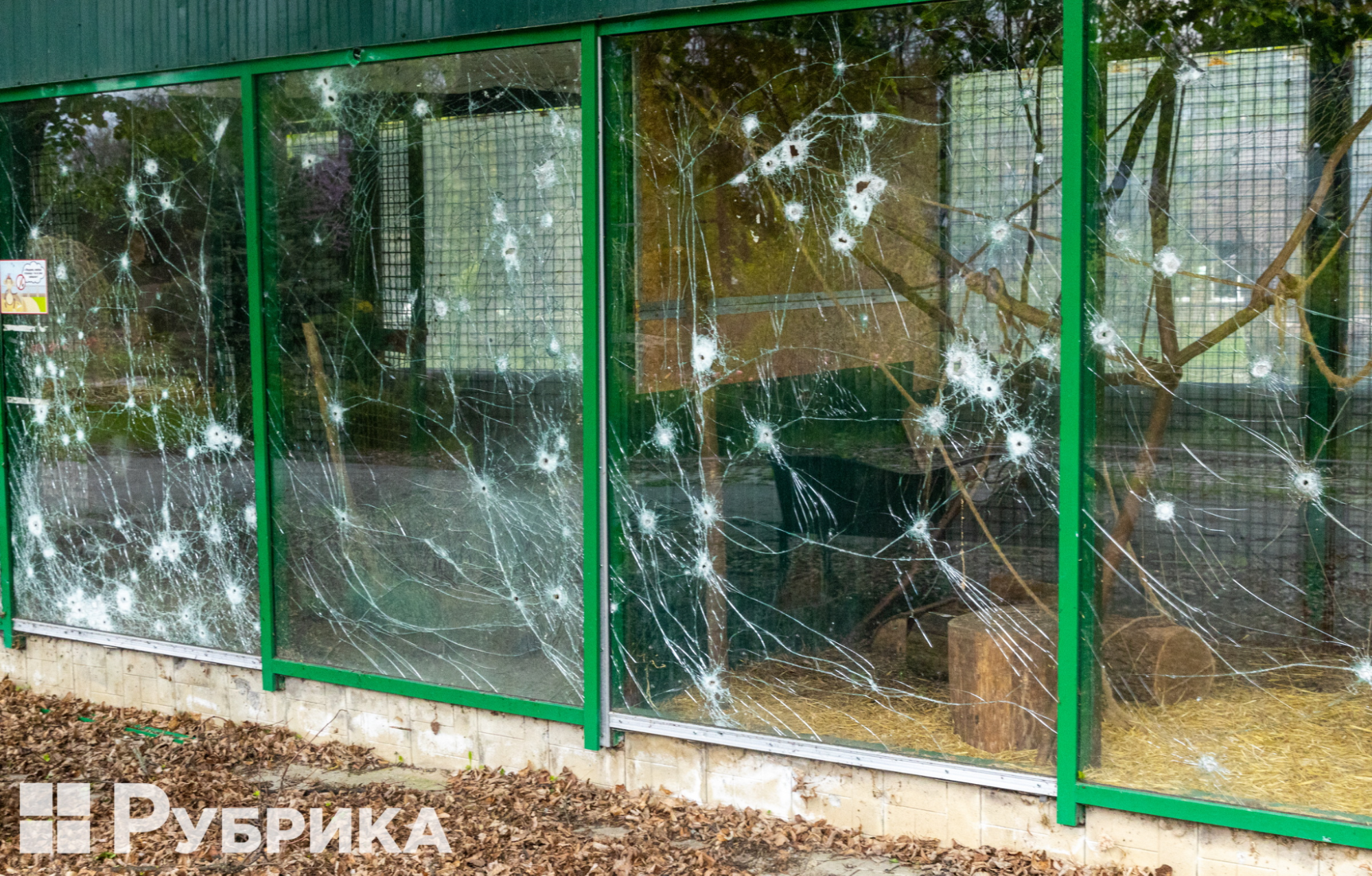
The enclosures in the Feldman EcoPark are riddled with bullet holes
About three hundred animals became victims of enemy shelling and bombing. Among them are lions, tigers, jaguars, apes, kangaroos, ungulates, birds, and others.
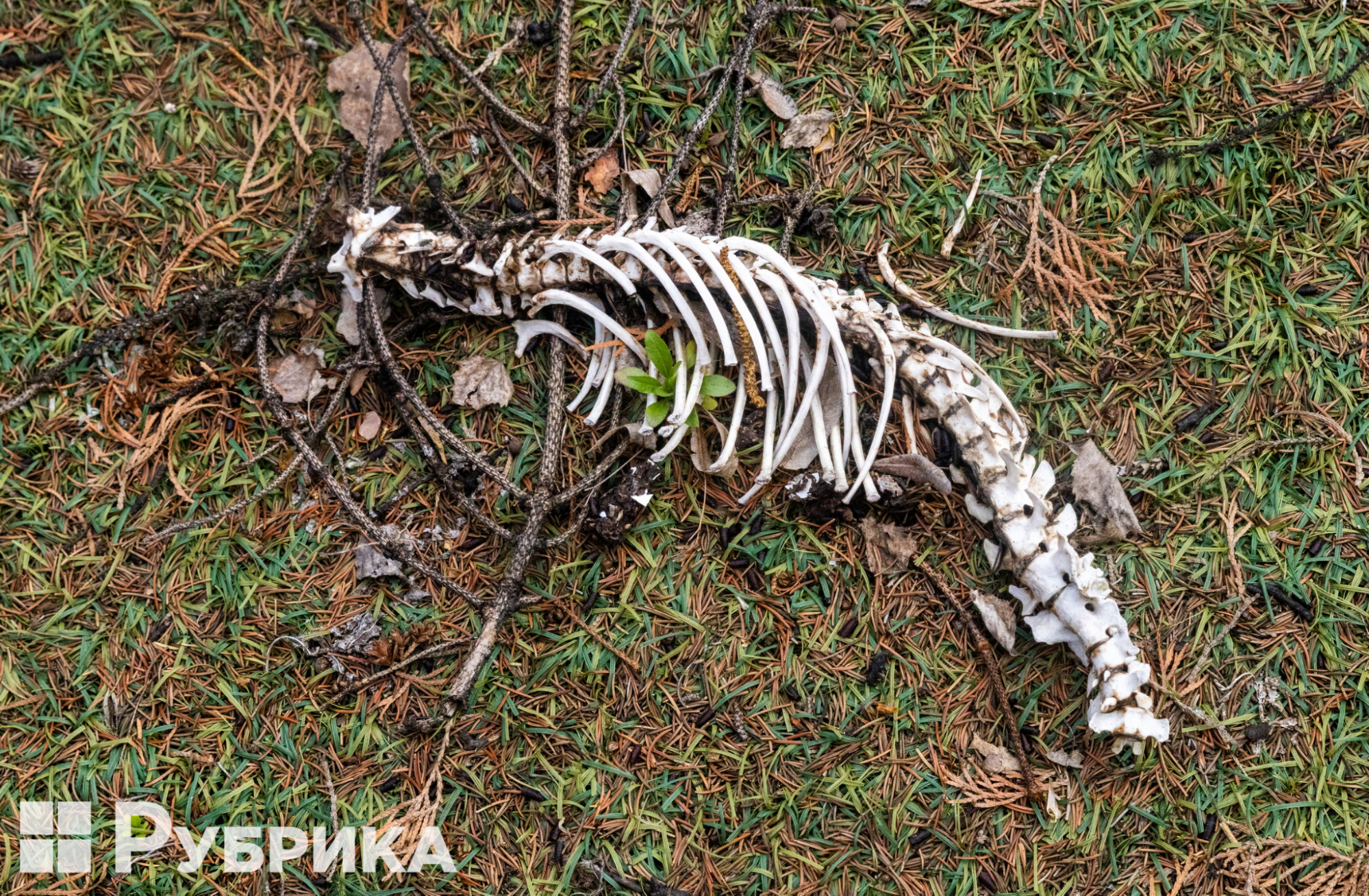
Some animals tried to escape during the shelling, but failed and were killed
The eco-park was badly damaged, including the animal enclosures, many trees, and many of its other facilities that had been built up over ten years since the sanctuary opened. "We did not set out to calculate a specific amount of damages, as this is unlikely to be done with sufficient accuracy, taking into account the damages caused to nature, animals, people, and not only the value of buildings and enclosures. The new EcoPark project involves its construction from scratch," Vadym, one of the EcoPark employees, told Rubryka.
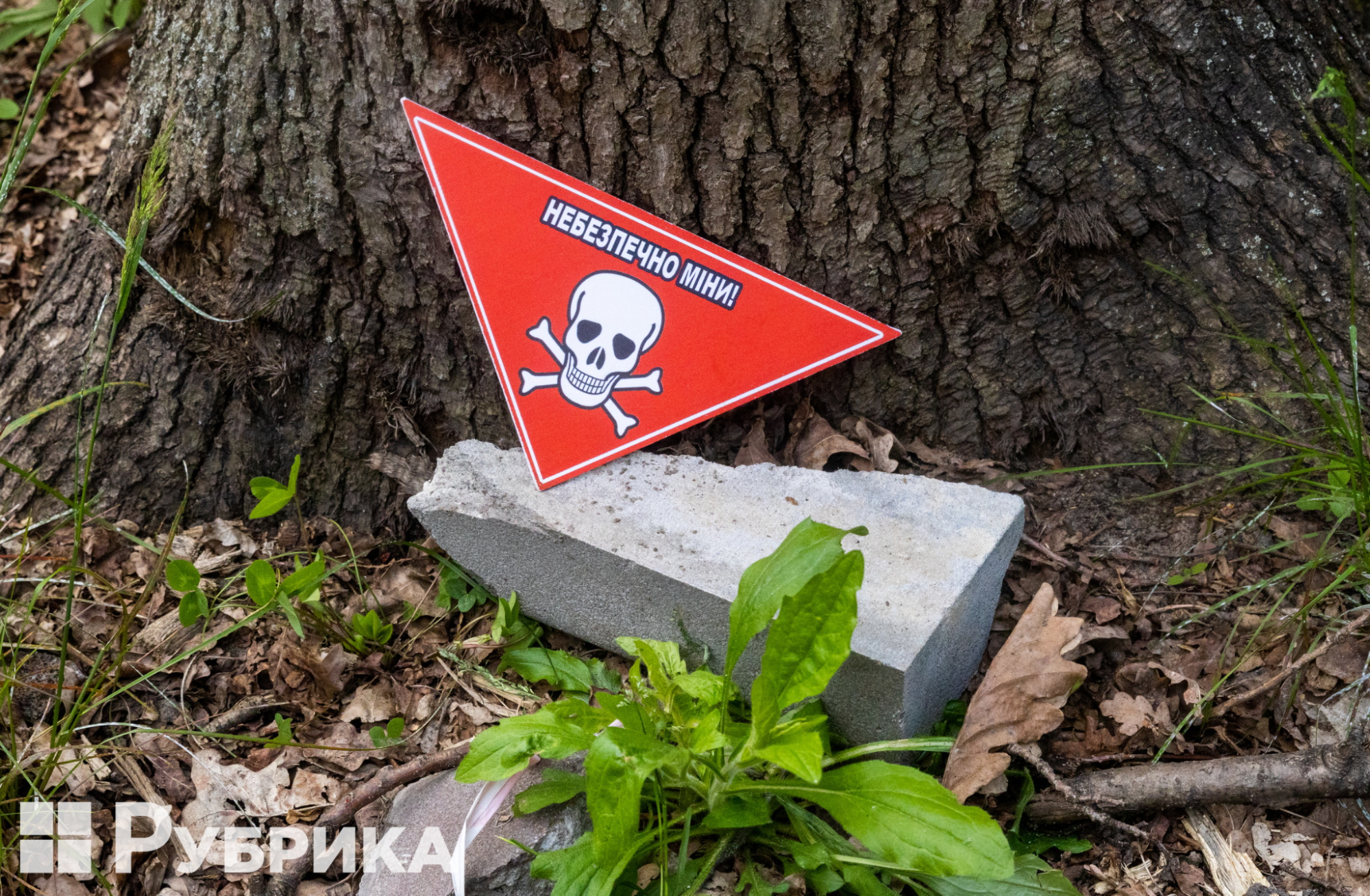
A sign in the Feldman EcoPark warns that the area is mined. The area is still not completely demined, and it is unknown how long it will take the sappers to make it safe
It is impossible to calculate the number of enemy strikes, sappers are still working on the territory, and since most of the park is still mined, there is no access there. "There were thousands of them — shelling was conducted every day, often several times a day, for six months," adds Vadym.
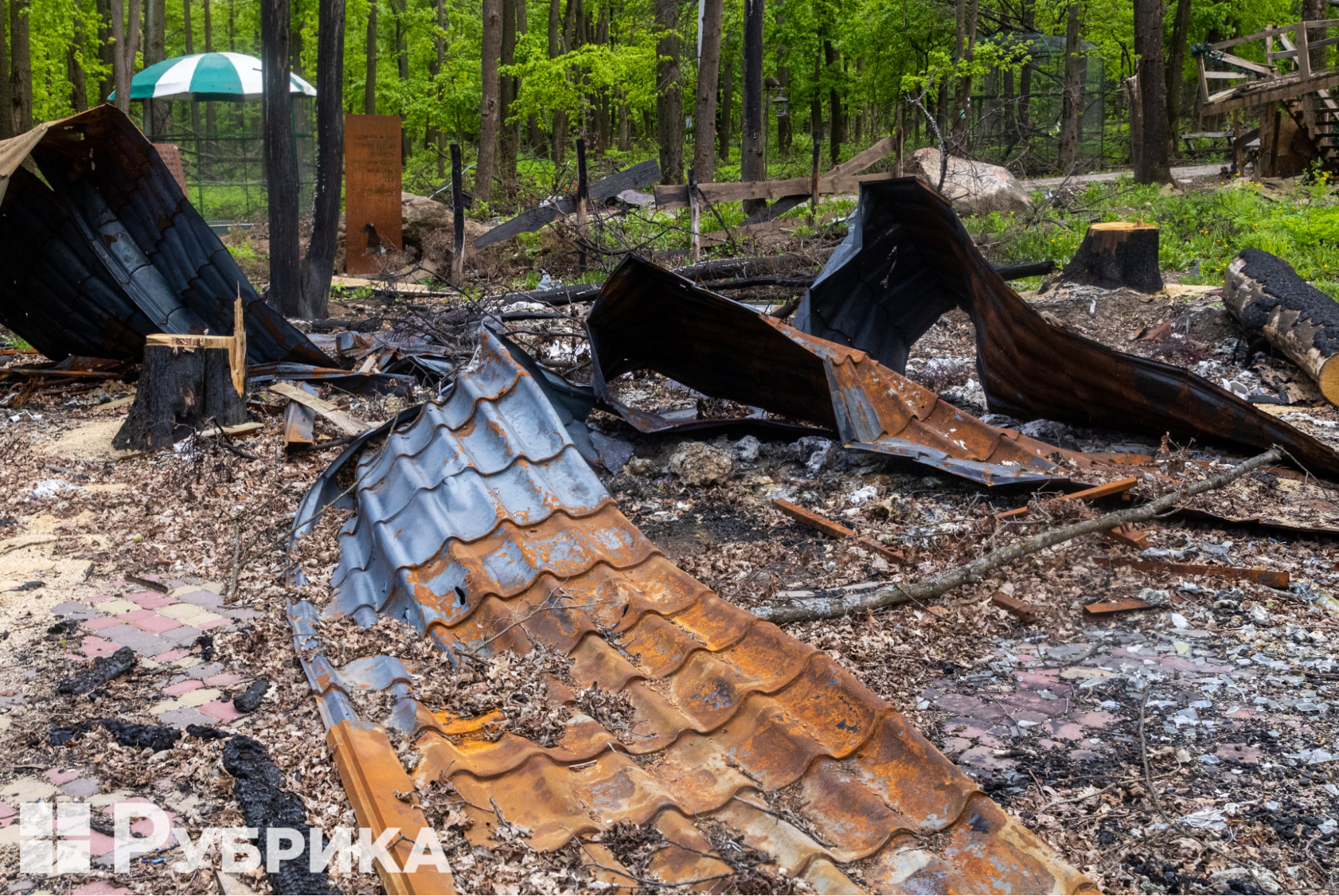
The blast wave blew away the metal roof, and burnt buildings can be seen in the background
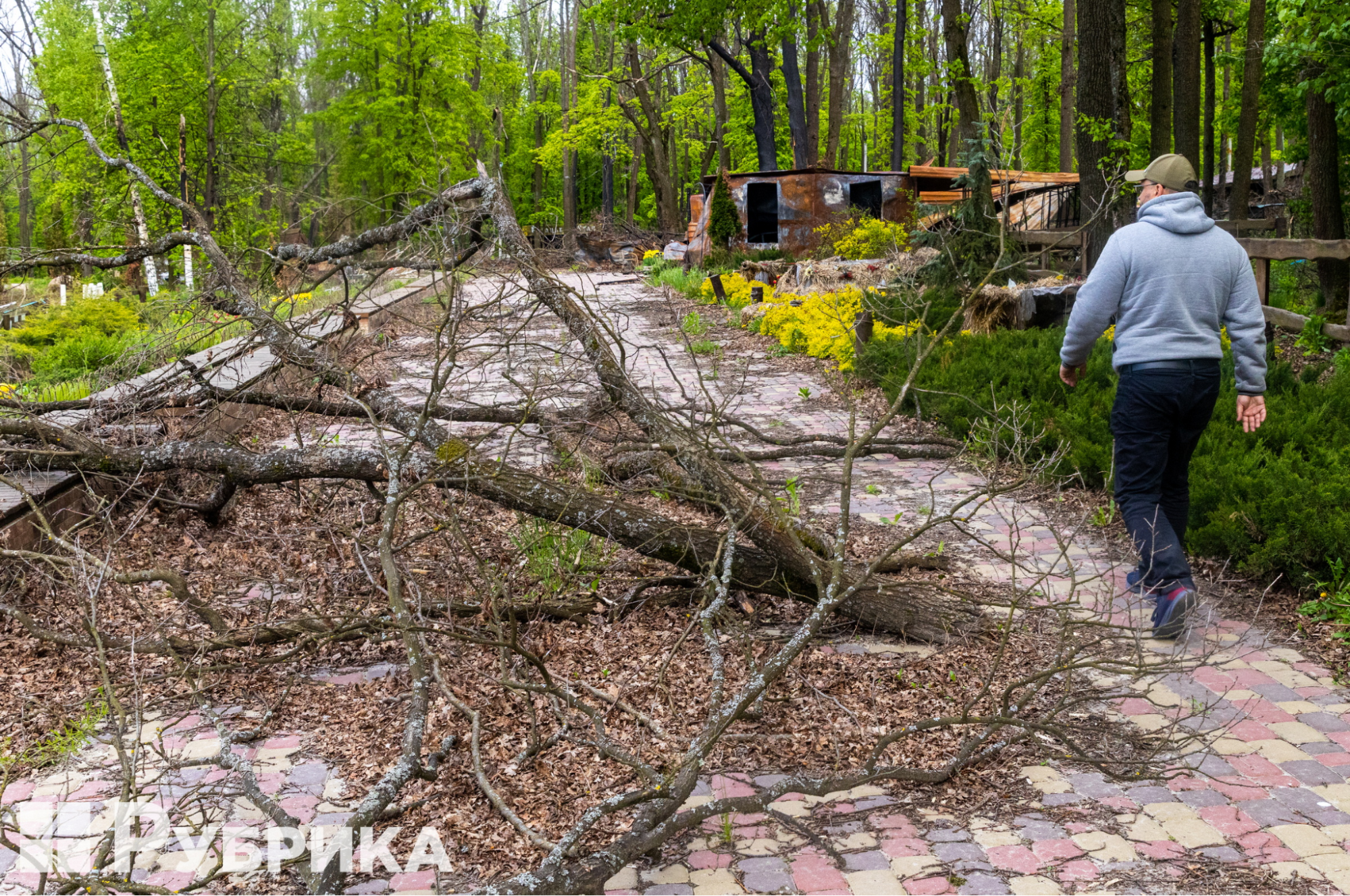
Many trees in the Feldman EcoPark have been felled or cut by shrapnel from shells
Despite all the difficulties, some of the animals were rescued, and a year later, they are returning to the Feldman EcoPark, which will open to the public very soon.
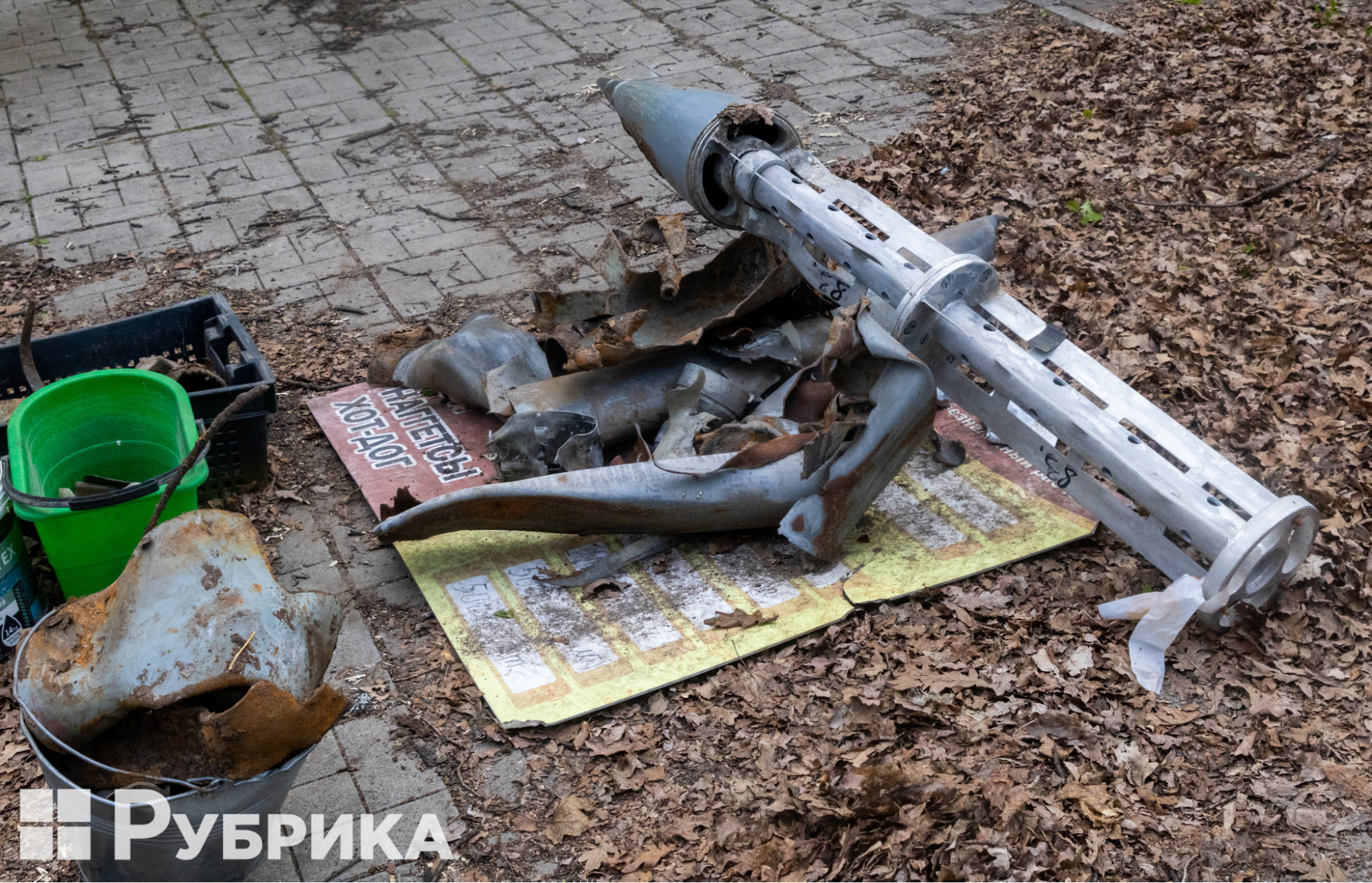
Sappers neutralized a fragment of a projectile in Feldman EcoPark
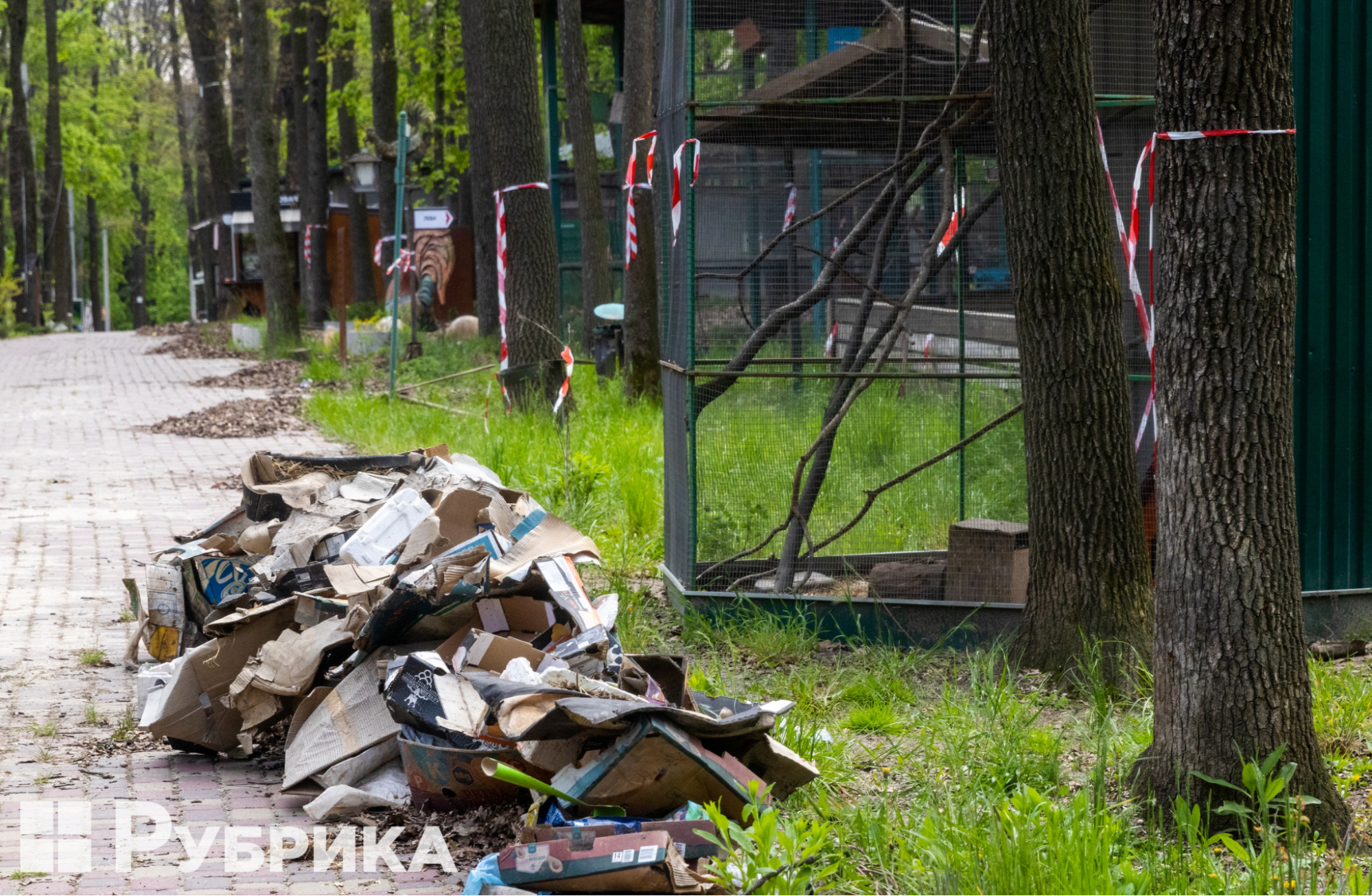
Sappers tie red ribbons on the trees to mark the already-checked spots. If the territory is cordoned off with tape, it has not yet been demined
What is the solution?
I had to risk my life to save the animals
Shelling of EcoPark began on the first day of Russia's full-scale invasion. The staff's main task was to feed, and give water to the animals — but without electricity this was impossible. Many employees fled the city at the beginning, while others just couldn't get to the park, so the first step was to form a team that would not be afraid to care for and evacuate the animals under fire.
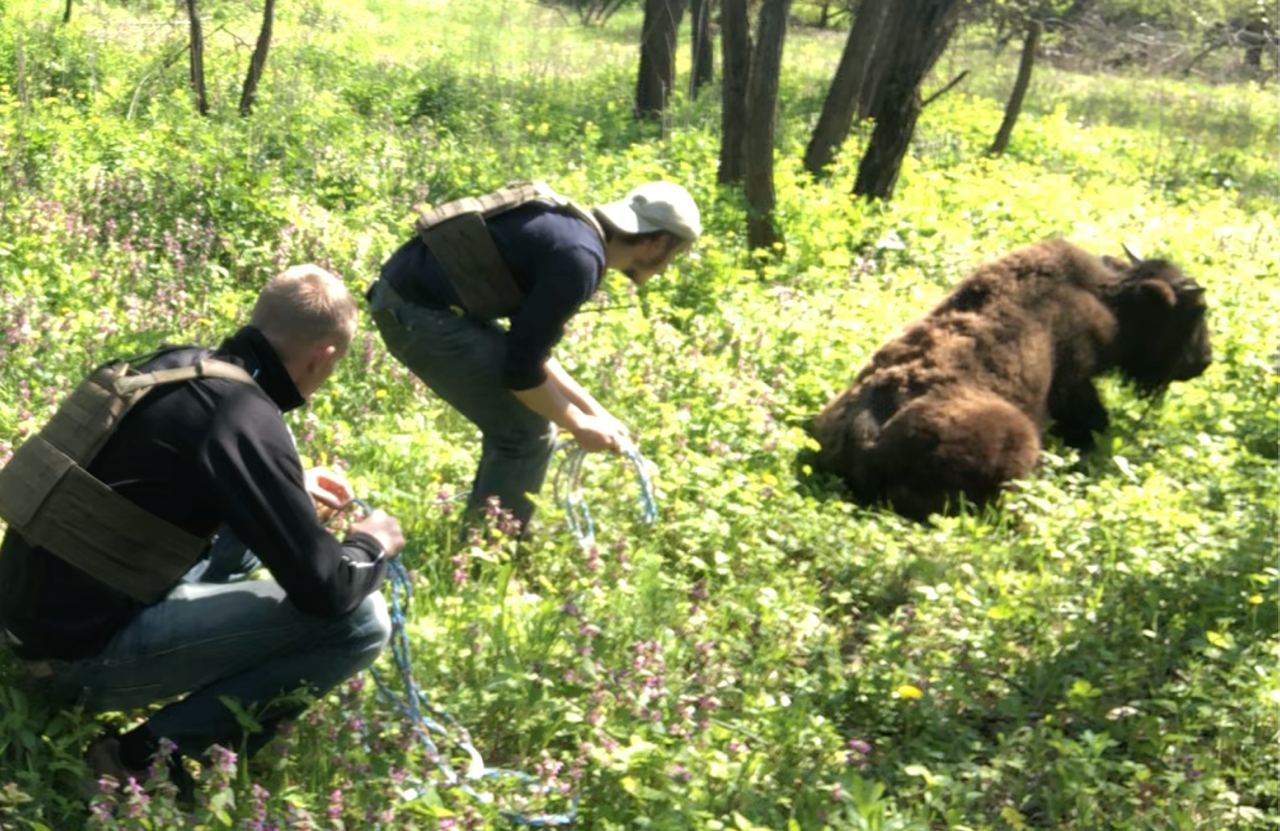
Photo from the Feldman EcoPark archive. Volunteers try to get a buffalo out of shelling, 2022.
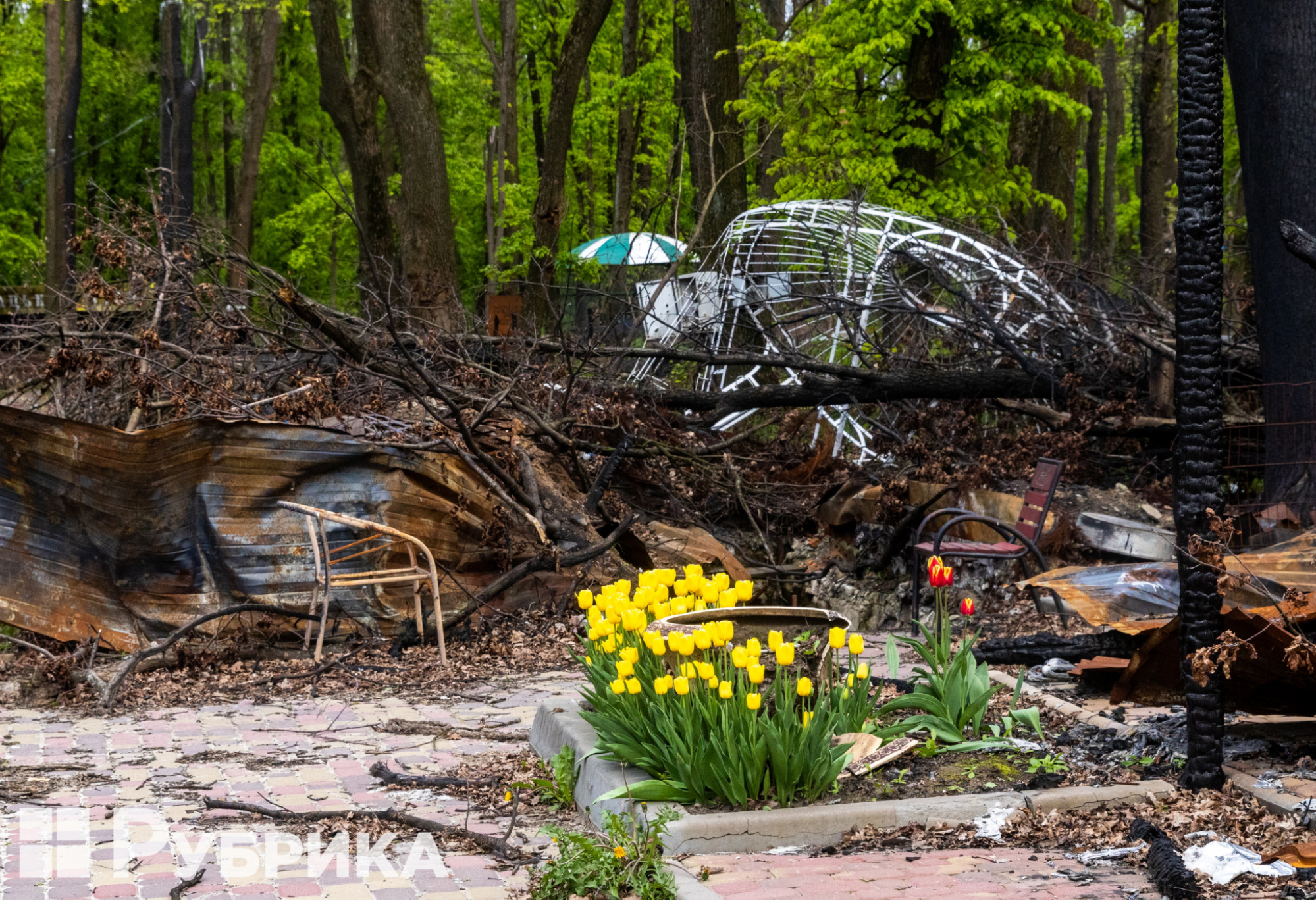
Flowers continue to sprout in a surreal, yet hopeful scene of destruction on the territory of Feldman EcoPark
In the first days of the war, it was a big problem to get into the territory of the EcoPark, even to feed and give water to the animals. At the beginning of March, the team started to take the animals out of the dangerous territory under fire.
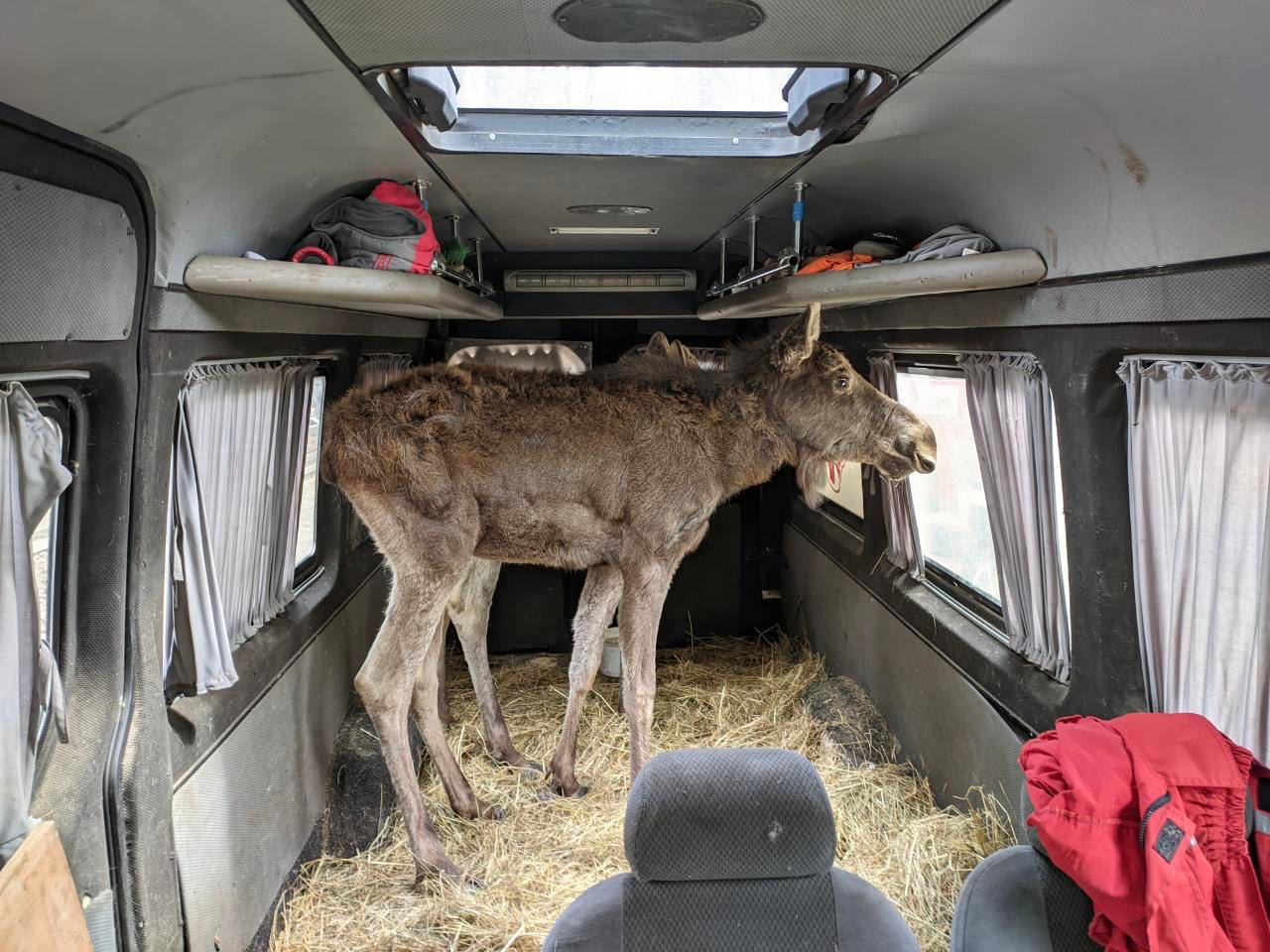
Photo from the Feldman EcoPark archive. The employees are evacuating the animals in the spring of 2022
Thousands of people from Ukraine and dozens of countries worldwide donated to save the animals. Ukrainian zoos, domestic and international organizations, and commercial structures also participated, providing special transport and fuel, but it was the volunteers who did the most, showing heroism, risking their lives together with the employees.
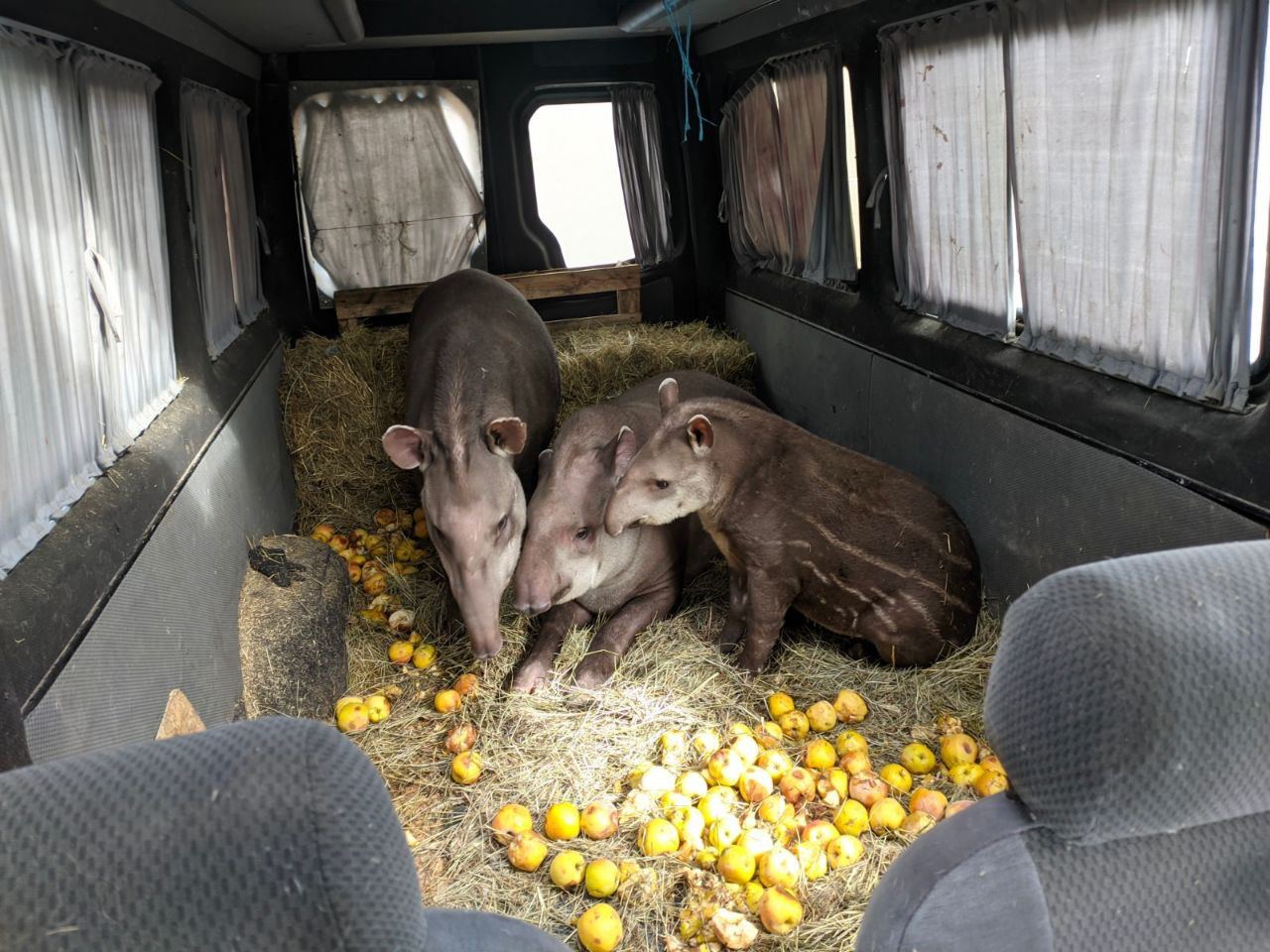
Photo from the Feldman EcoPark archive. The transport was specially equipped for evacuating the animals
The stories that are made under the shelling have become legends
Serhii is one of the employees who led Rubryka's team through the safe areas of EcoPark. At almost every cage, he told the stories of how the animals that lived there were rescued.
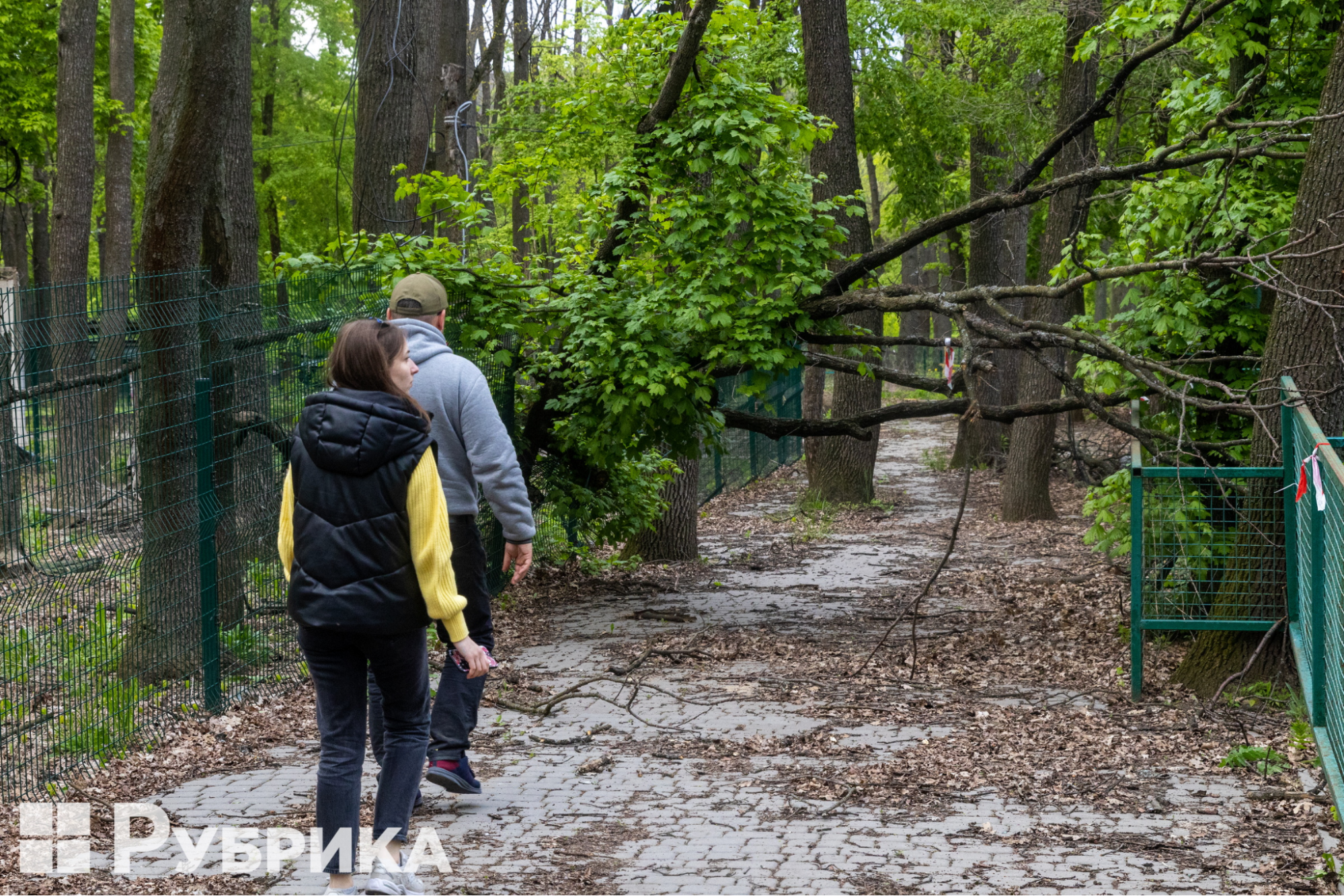
Rubryka journalist Viktoriia Hubareva and a member of the Feldman EcoPark are touring the park
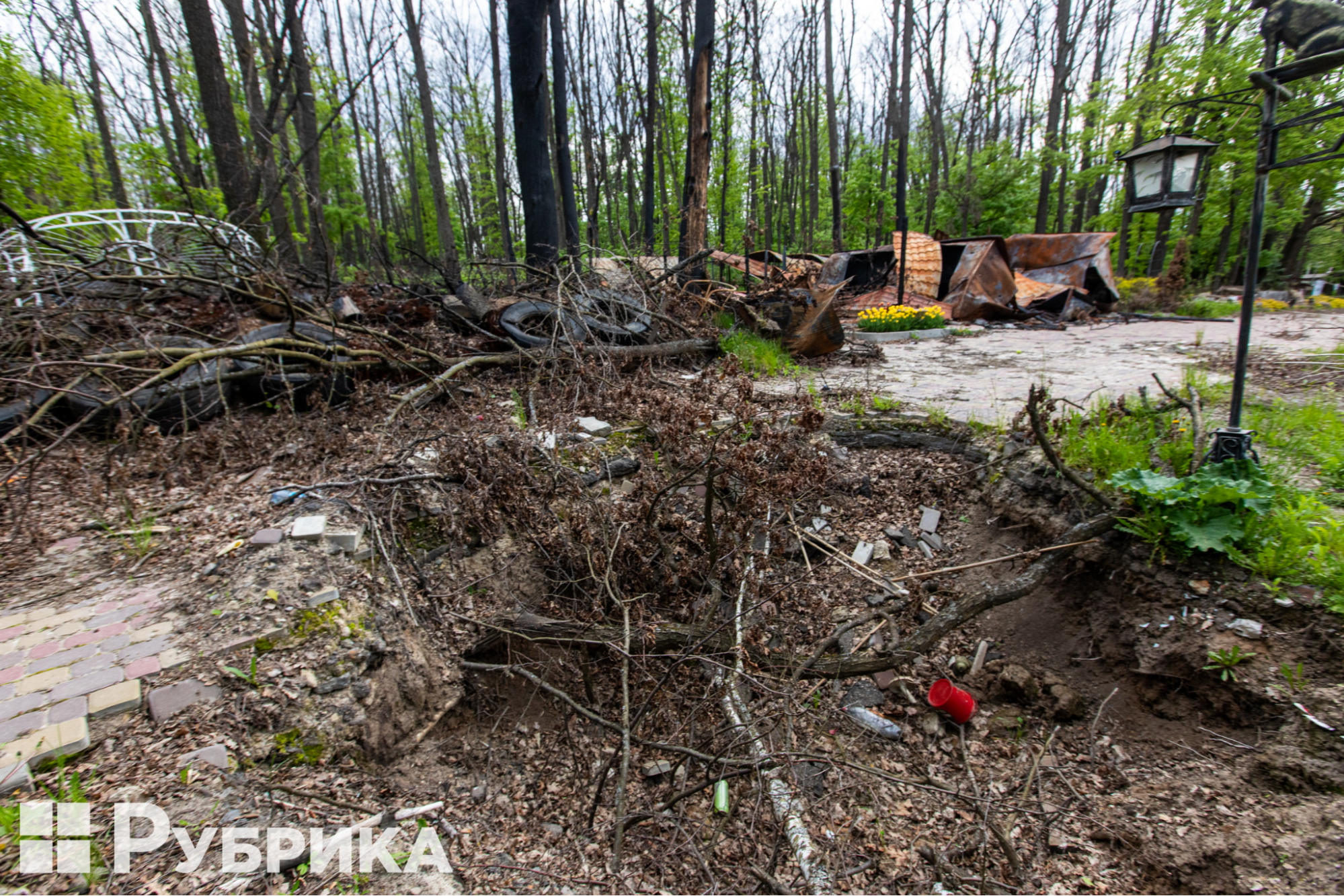
A crater left by a Russian missile on the territory of Feldman EcoPark. It is impossible to calculate how many pits there are in total because the territory has not yet been completely demined
A guy who became a legend in Japan
The national symbol of Japan is the crane, and one of them used to live in Feldman EcoPark.
"On that day, the situation was hazardous: shelling started, the evacuation team was hit with Grad MLRS and mortars, so they had to flee and leave the territory of the Ecopark urgently," says Vadym. "That's why, saving animals, we grabbed the first ones we could get our hands on and evacuated urgently."
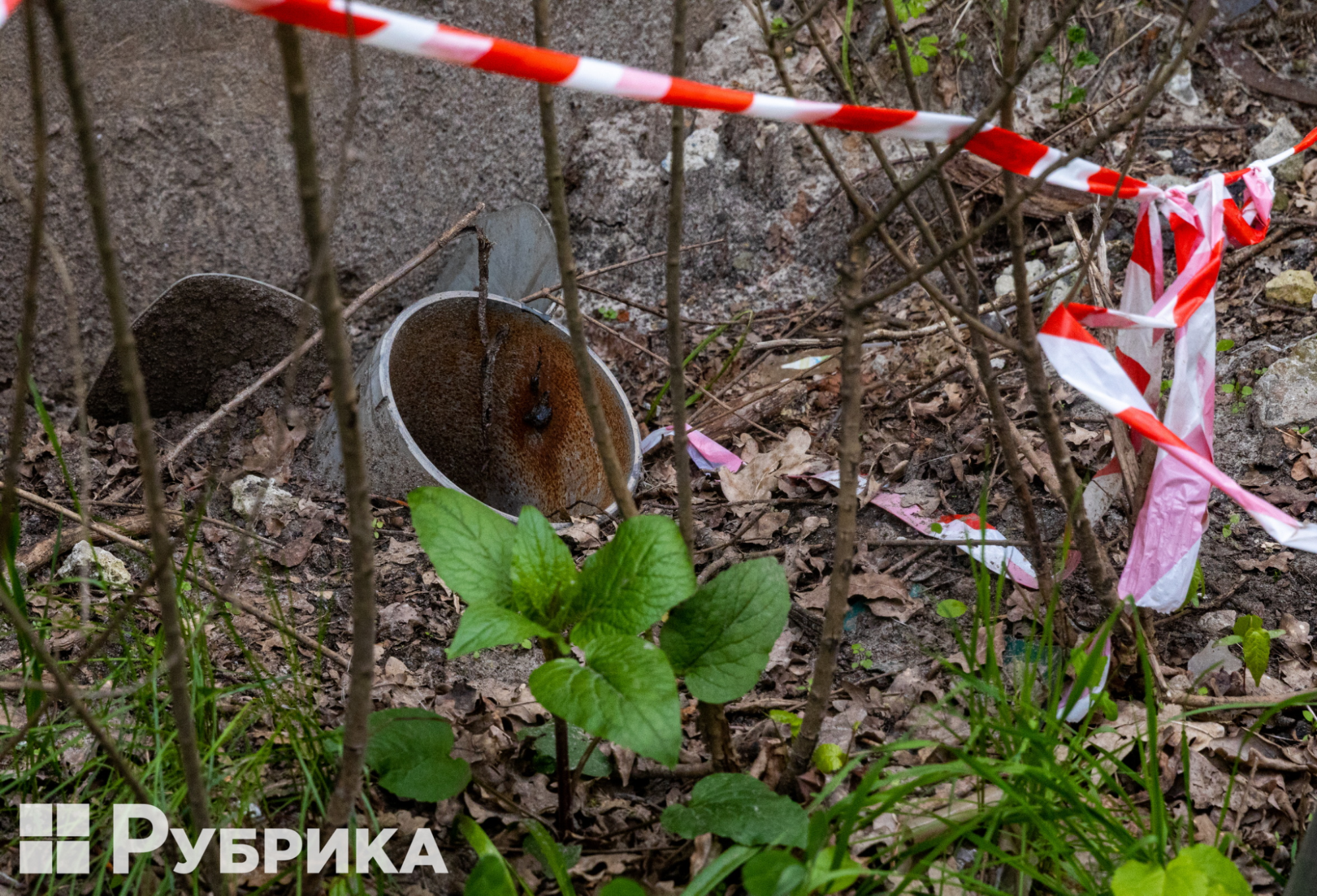
Part of the projectile remained in the ground on the territory of the Feldman EcoPark. A red ribbon indicates that the territory is dangerous
A member of the evacuation team caught a Japanese crane and ran with it for about two kilometers. Someone caught it on video, and it went viral on social media, and he became a national hero in Japan, Serhii told Rubryka. "It is a national symbol for them, and it was a shock for them that a crane was rescued directly from under fire in Ukraine."
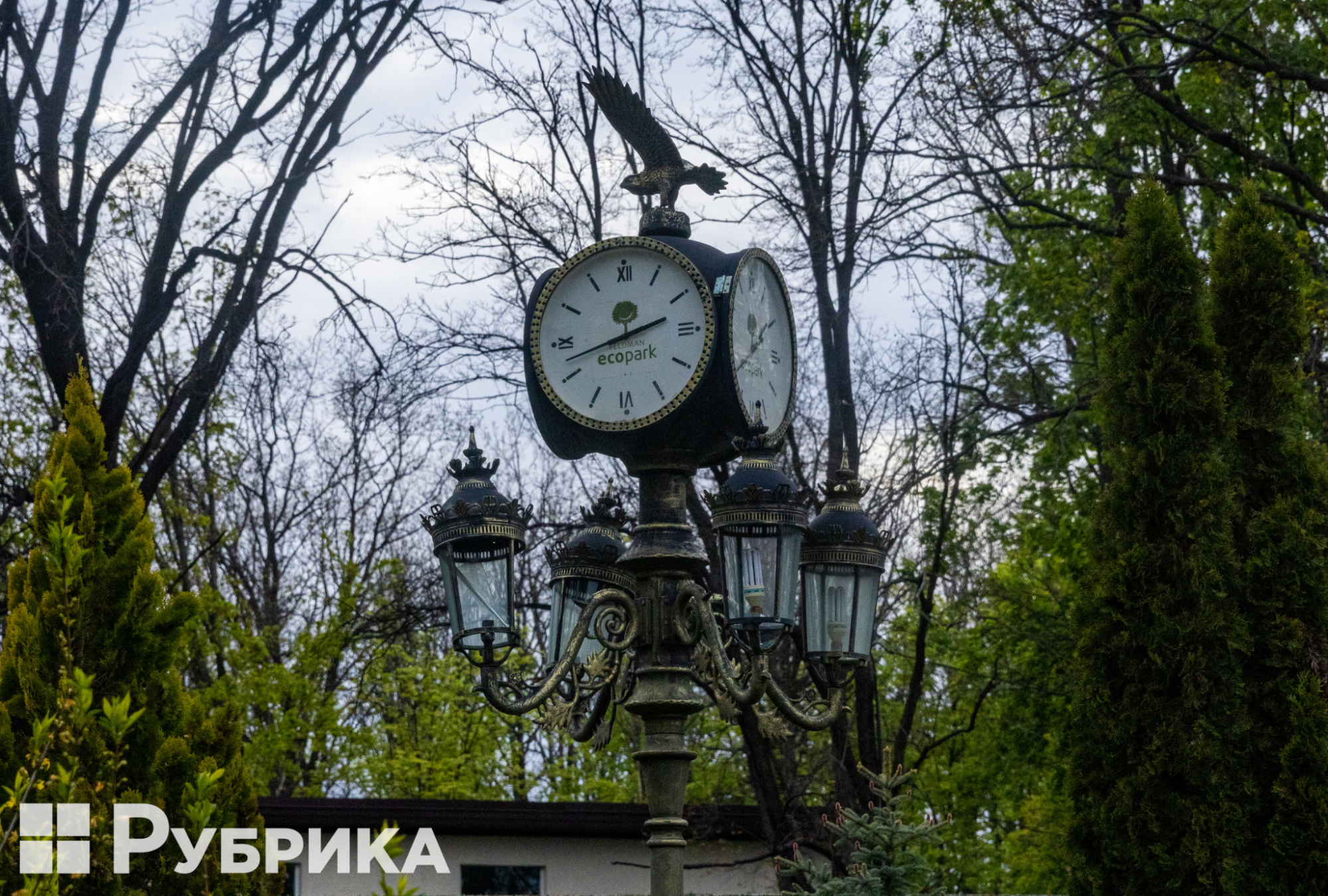 Time appears frozen at Feldman EcoPark, just like the clock
Time appears frozen at Feldman EcoPark, just like the clock
The rams were carried out
It is difficult to get to the most remote area of the park — Bizonnyk, where rams lived, and it was even more difficult to lead them out under shelling. The ram categorically refused to walk, so the park employee Andrii Tyvanyuk had to carry it three kilometers on his back. There were no other options — those who did not want to go were carried out.
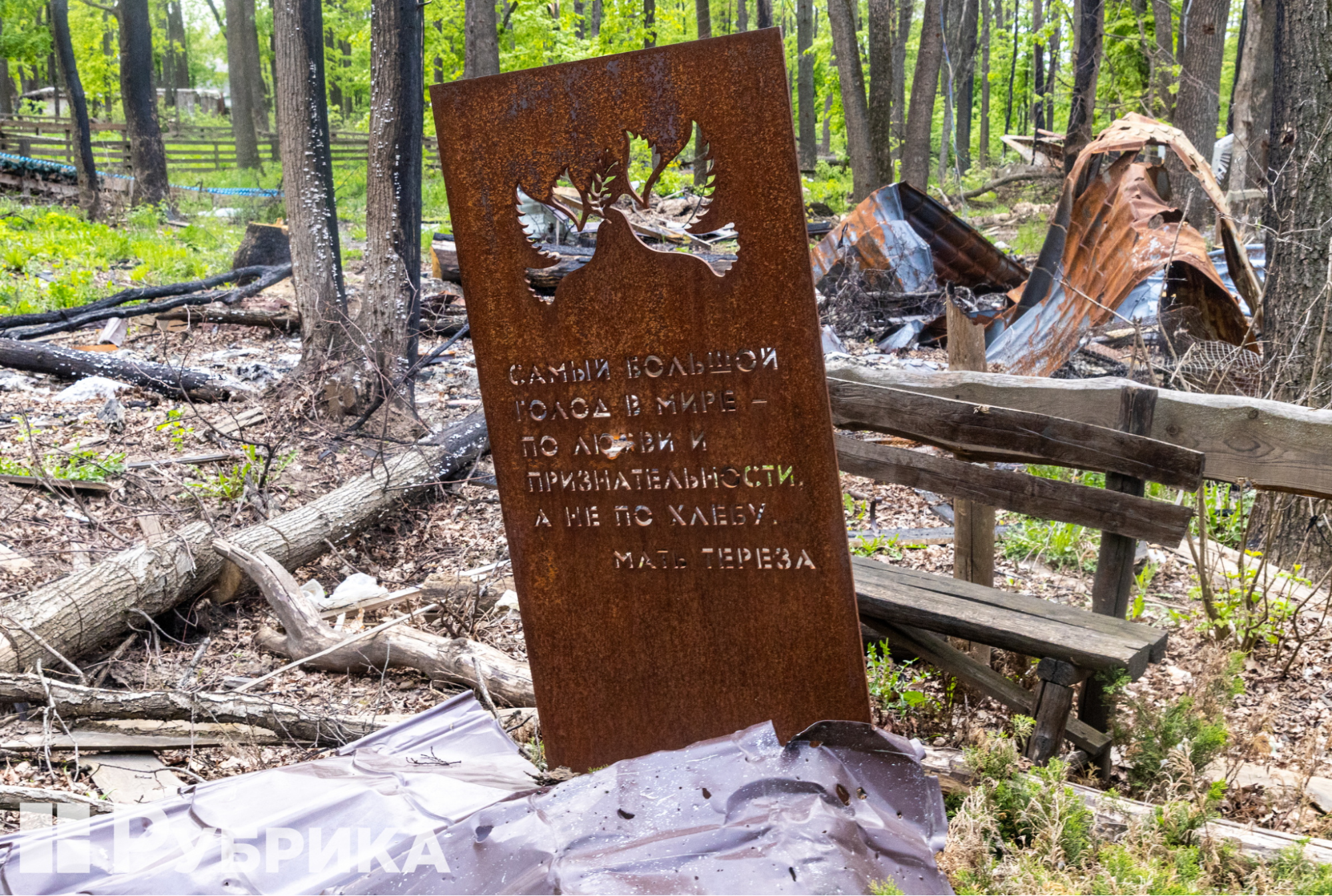
A metal sign on the territory of Feldman EcoPark, damaged by shrapnel
Animals that had never been tamed walked toward people
The employees are still surprised by the situation that happened with the moose. They found that even some wild animals understood and felt the sense of danger, and cooperated in an emergency. The park's moose, which lived in an environment as close as possible to its natural habitat, was never trained to communicate with humans, so that it could one day be released into the wild as part of their reintroduction program. When the time came for evacuation, the moose allowed itself to be taken out without any resistance, as if it could feel that its life depended on it.
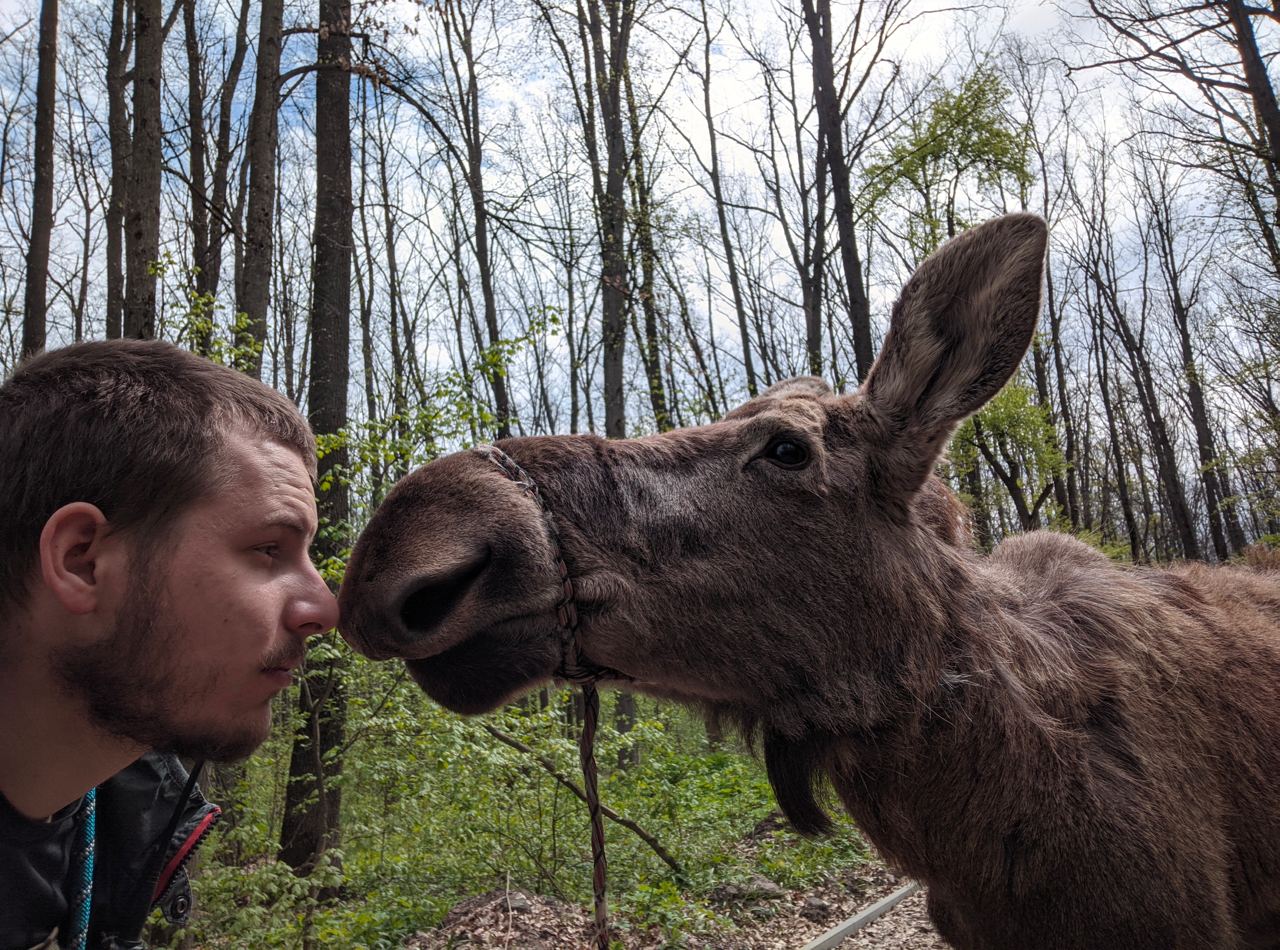
The EcoPark volunteer communicating with a moose
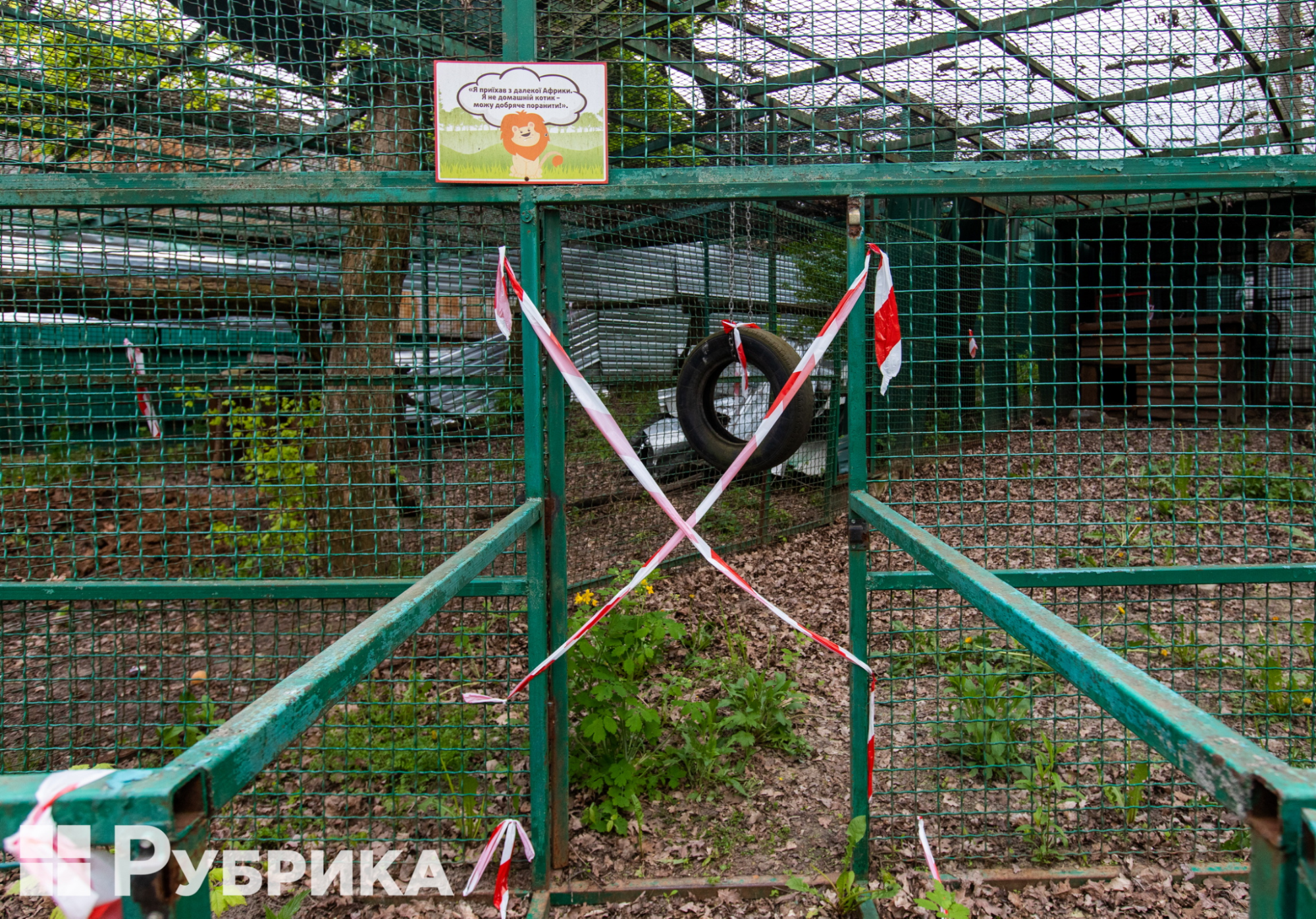
The enclosure in EcoPark has still not been demined. Red tape indicates danger and prohibit entry
The situation was somewhat similar with baboons — very dangerous animals with a complex character. To save them, it was necessary to enter the enclosure and transfer the animals to a new cage for transportation. Volunteer Tymofii Kharchenko took this task upon himself.
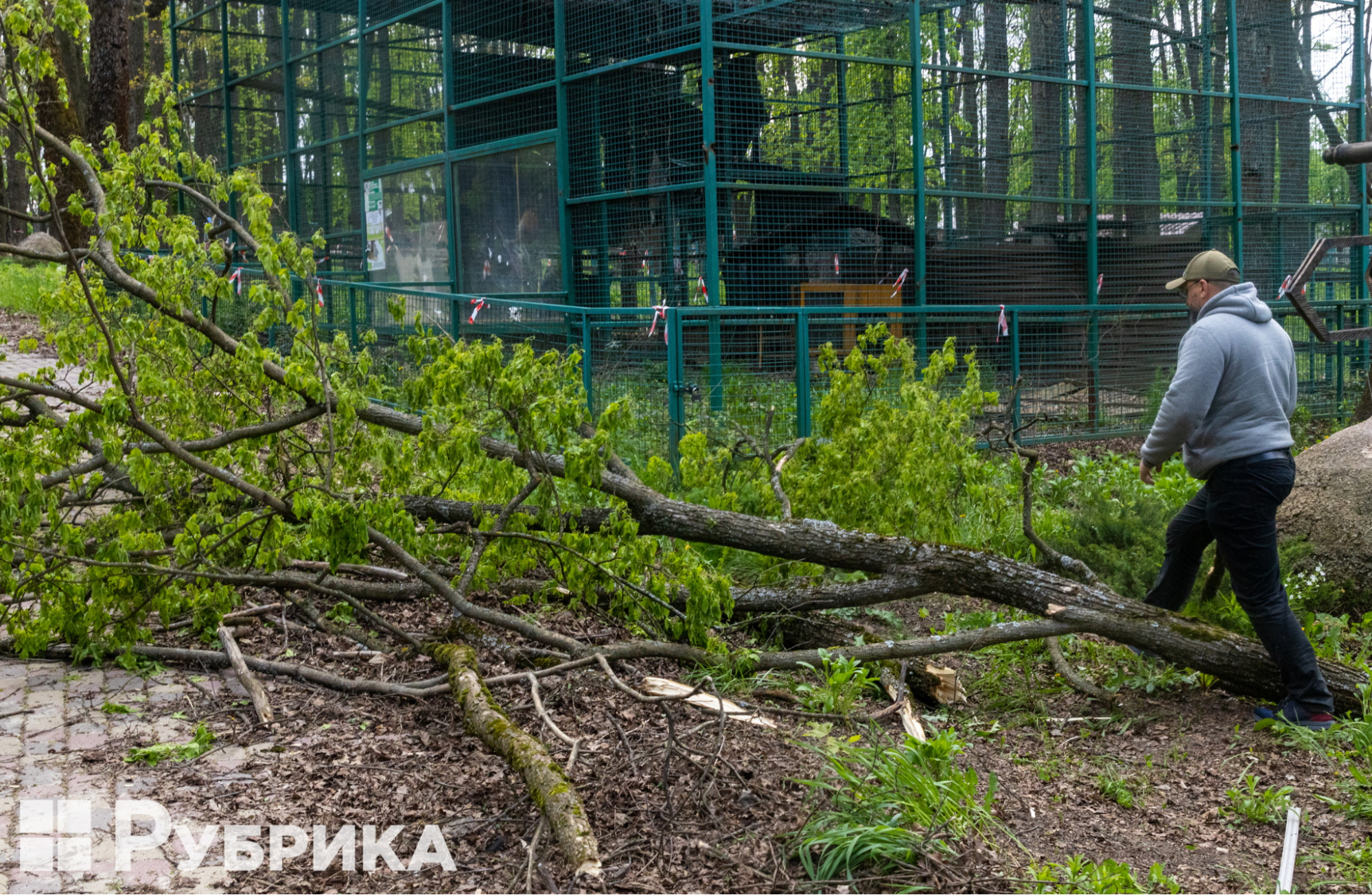
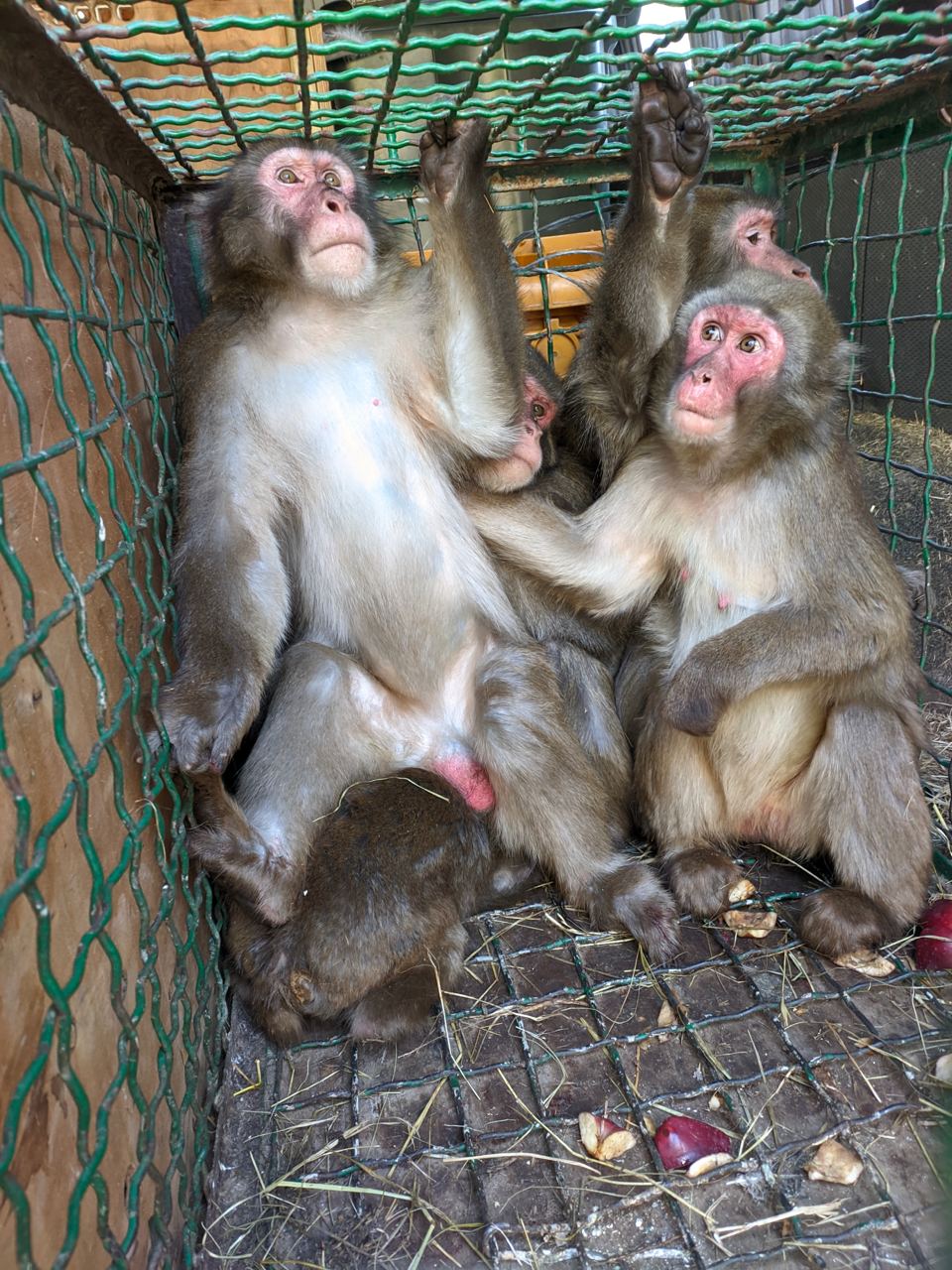
Monkeys were transferred to a cage during the evacuation. Photo from the Feldman EcoPark archive
He simply said to them: "Come in, or you will all die, and so will we," and all of them, following the leader, quietly and calmly entered the cage. The few days they spent in this cage, while we were looking for a place for temporary shelter, they sat calmly and without incident," Vadym recalls.
"From the very beginning, we talked about the fact that the forced evacuation of animals is a temporary phenomenon"
In autumn 2022, the workers managed to return to the park after the Russians were driven away and the shelling subsided.
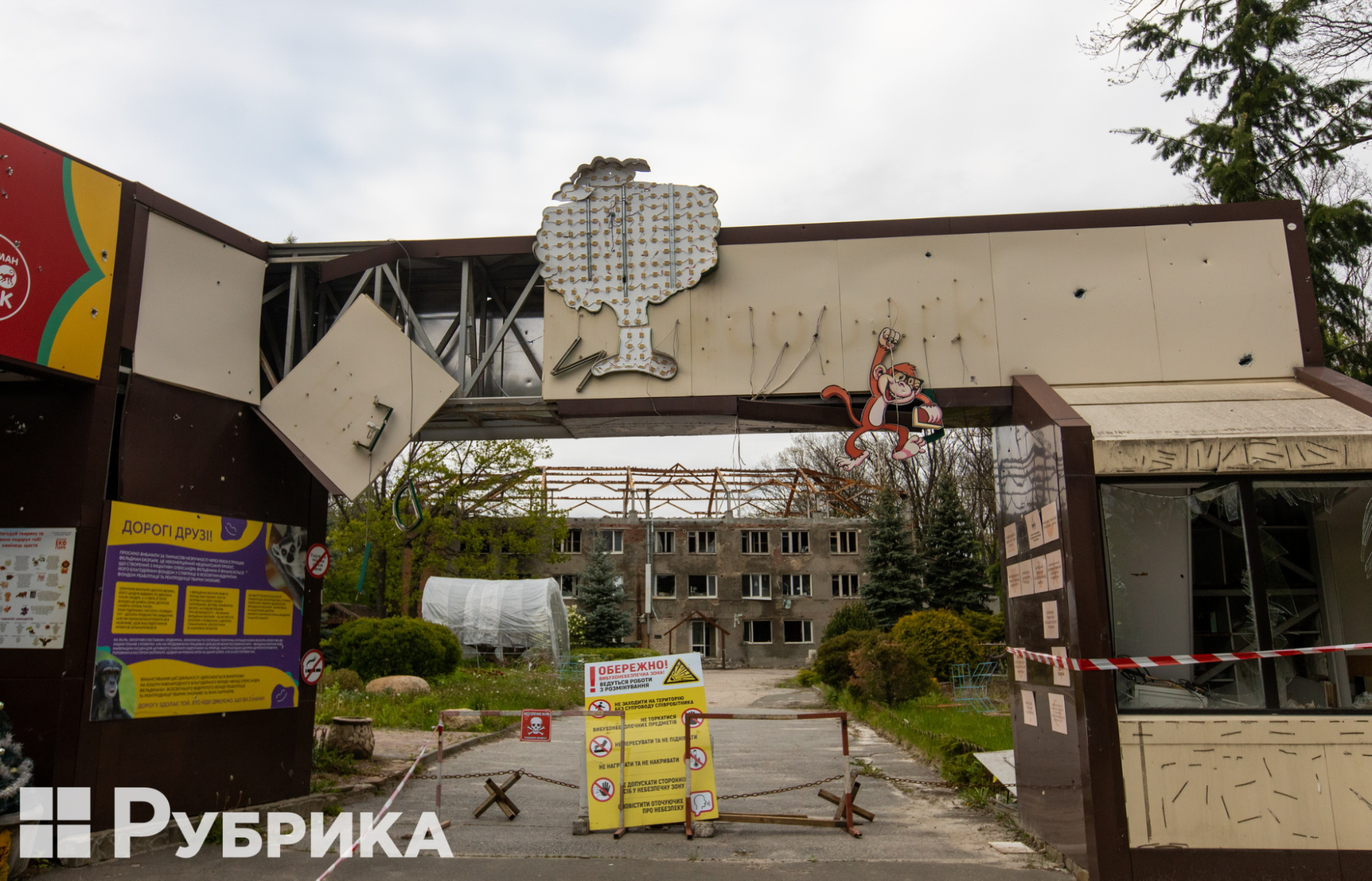
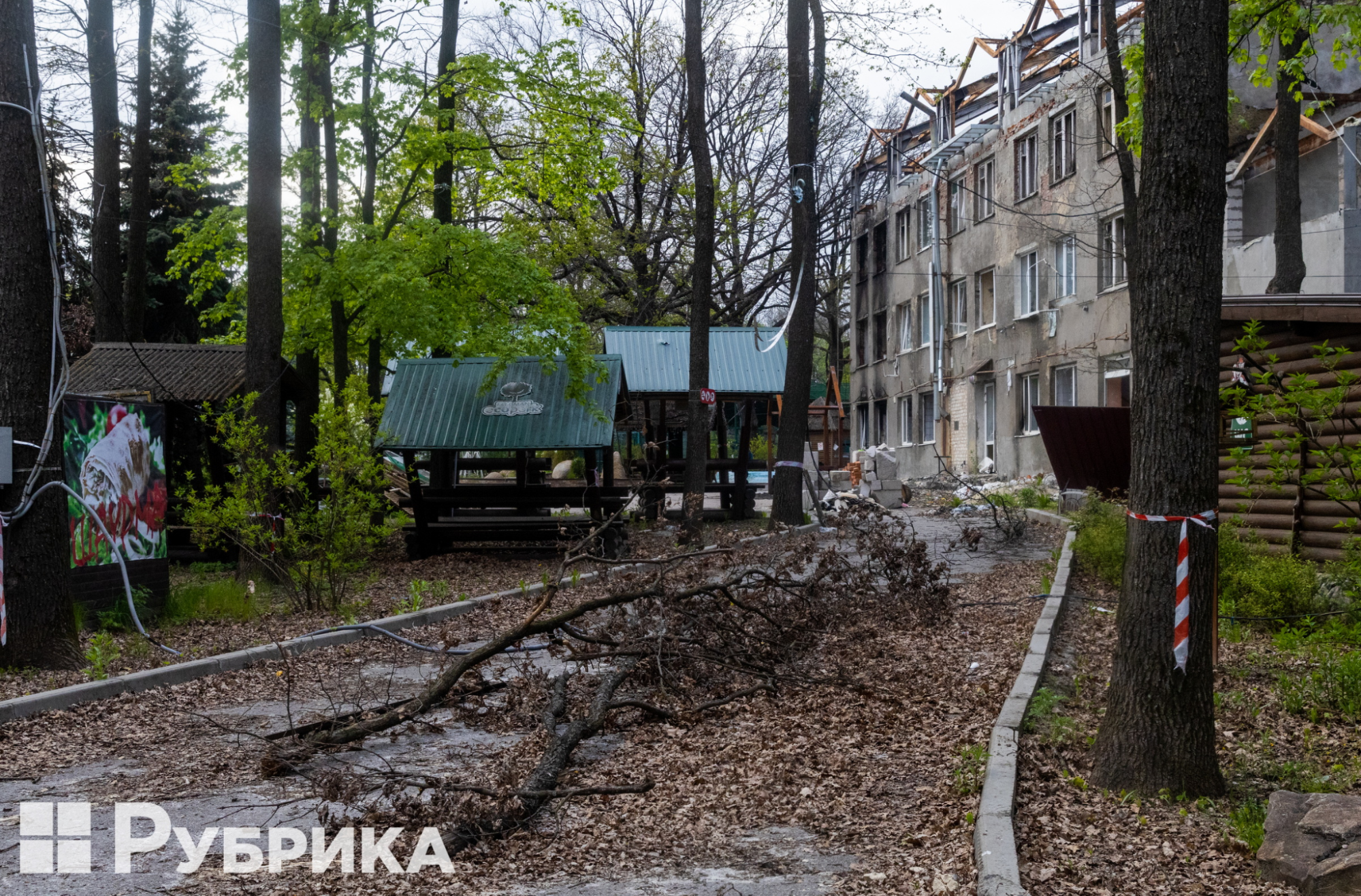
The main entrance to Feldman EcoPark and the surrounding area is closed
"The complete, total destruction struck me. Destroyed buildings, buses shot up and other equipment, destroyed and mutilated trees, huge craters at the sites of explosions, scattered with remnants of rockets and shells and fragments on the territory, and many dangerous discoveries like unexploded ammunition," says Vadym. No one knows how many there are, as large sections of the EcoPark has not yet been examined by explosives experts.

The building near the entrance to Feldman EcoPark is completely burned and unrecoverable
The restoration process of the EcoPark began in the autumn of 2023. The park consists of two parts separated by a road. On the right is the main entrance and its completely destroyed part, and on the left is the Valley of Alpacas, where llamas and ungulates have already started returning.
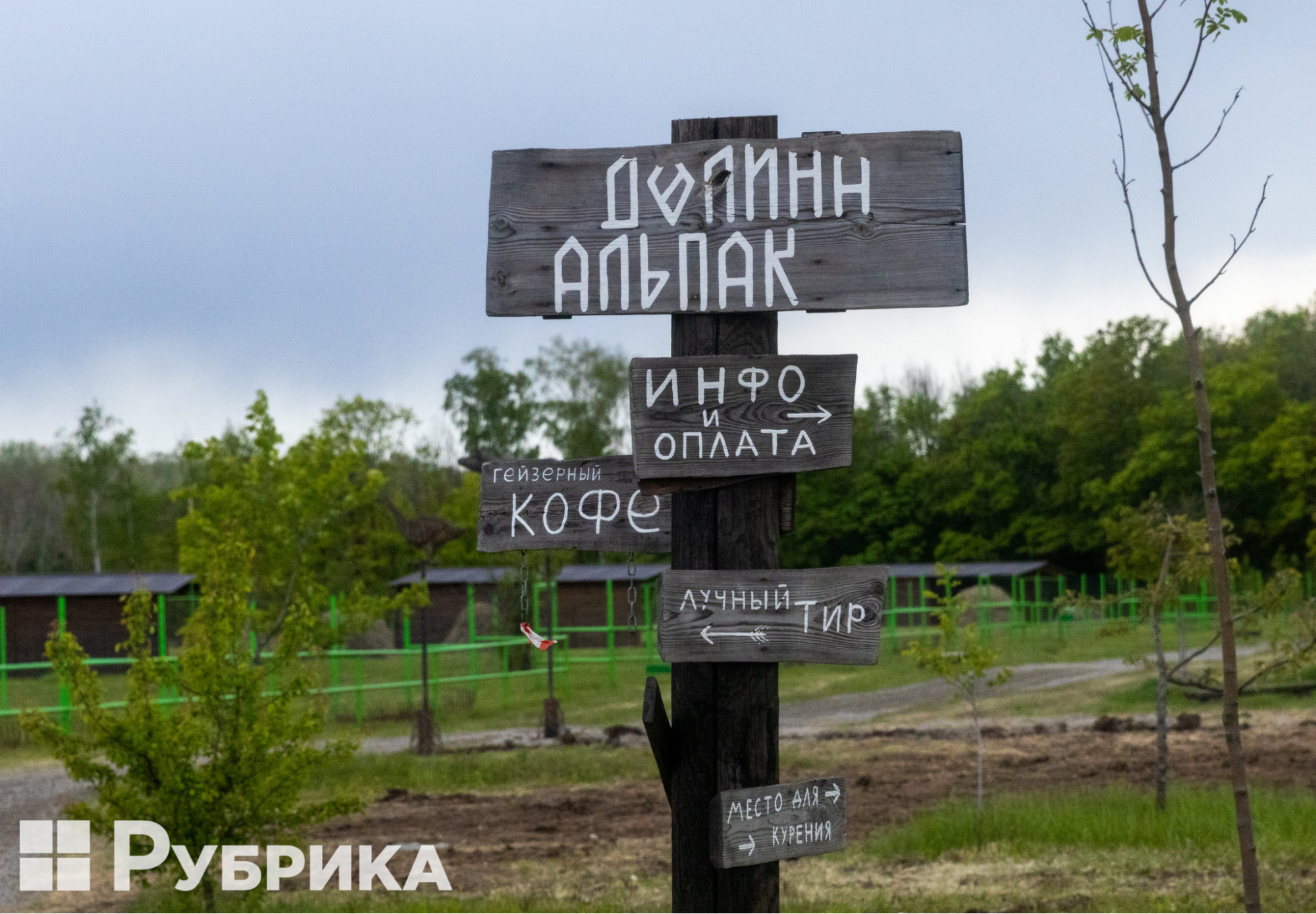
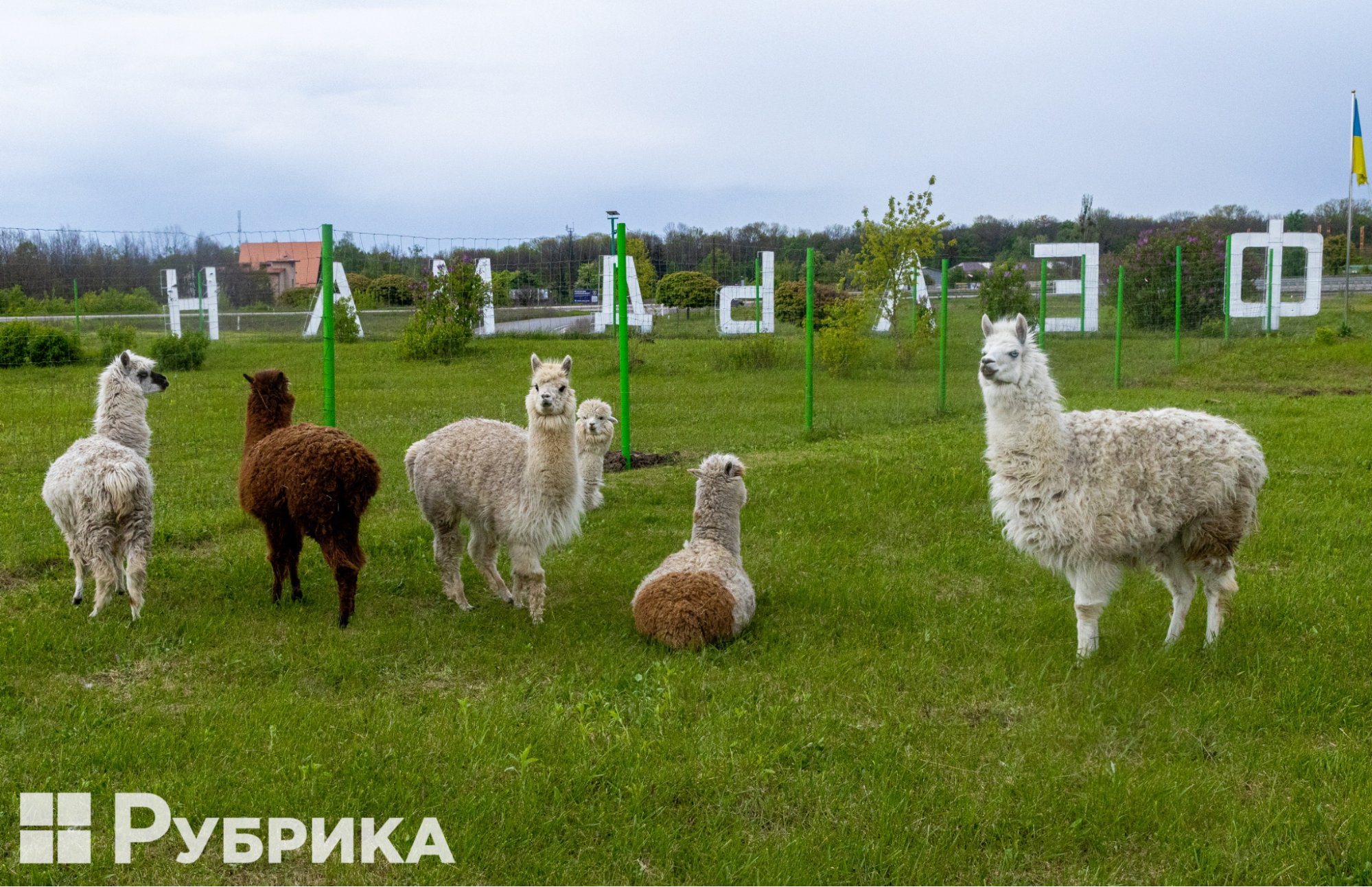
Valley of Alpacas is a part of the Feldman EcoPark, located across the street from the destroyed part of the park. This area has already been demined, the enclosures have been restored, and the animals that were evacuated have been returned
While the park was being restored, the animals lived with zoos and other eco-parks which came to their aid. Alpacas, for example, spent almost a year in a friendly eco-park in the Poltava region, and now they have returned home.
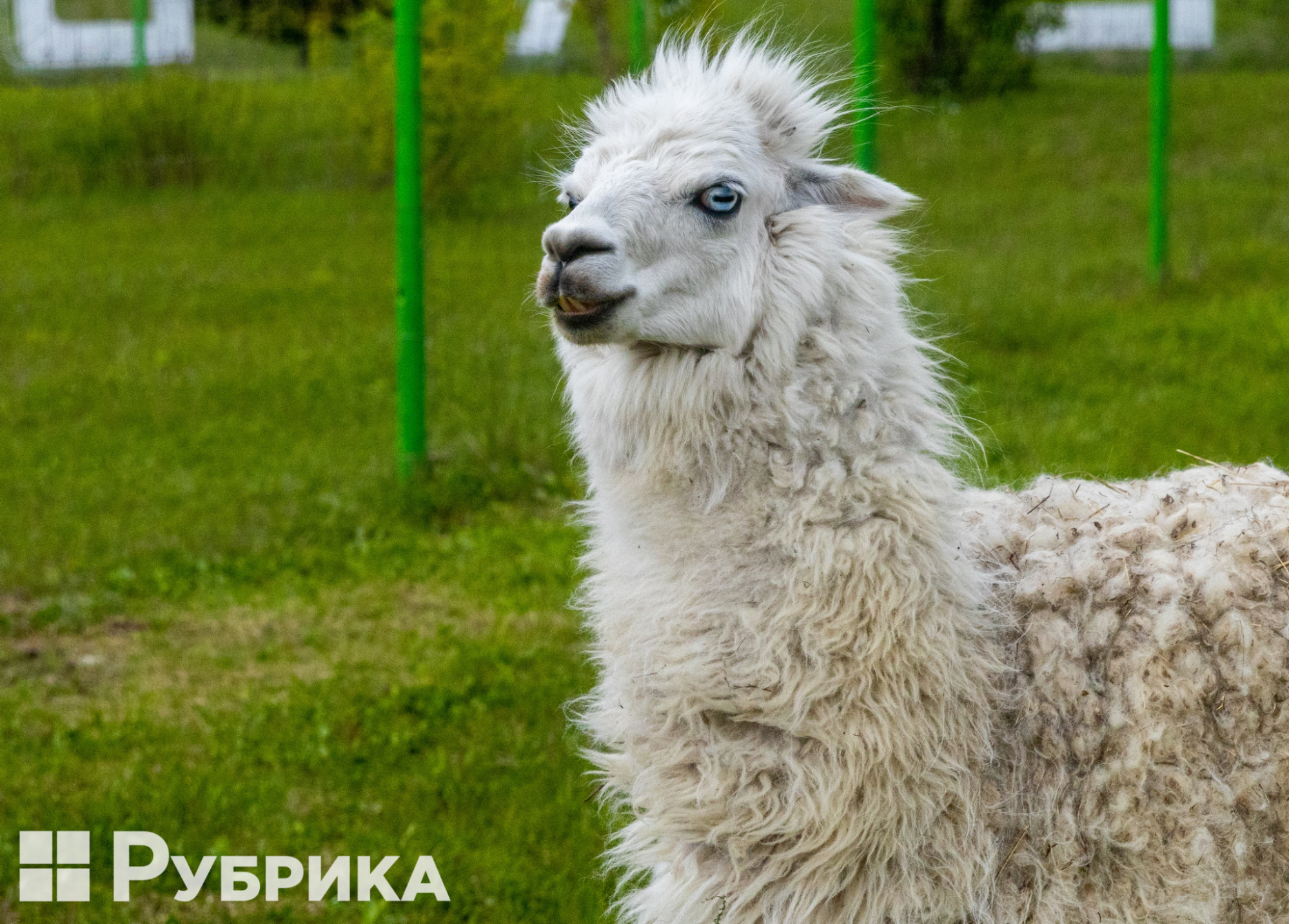
The pupils characteristic for alpacas is evidence of the animal's unusual family tree. By all other signs, it is a llama
Animal evacuation was always intended as a temporary solution. "We plan to bring them all home, maybe except for some situations with elderly or injured animals, which cannot be moved," Vadym says.
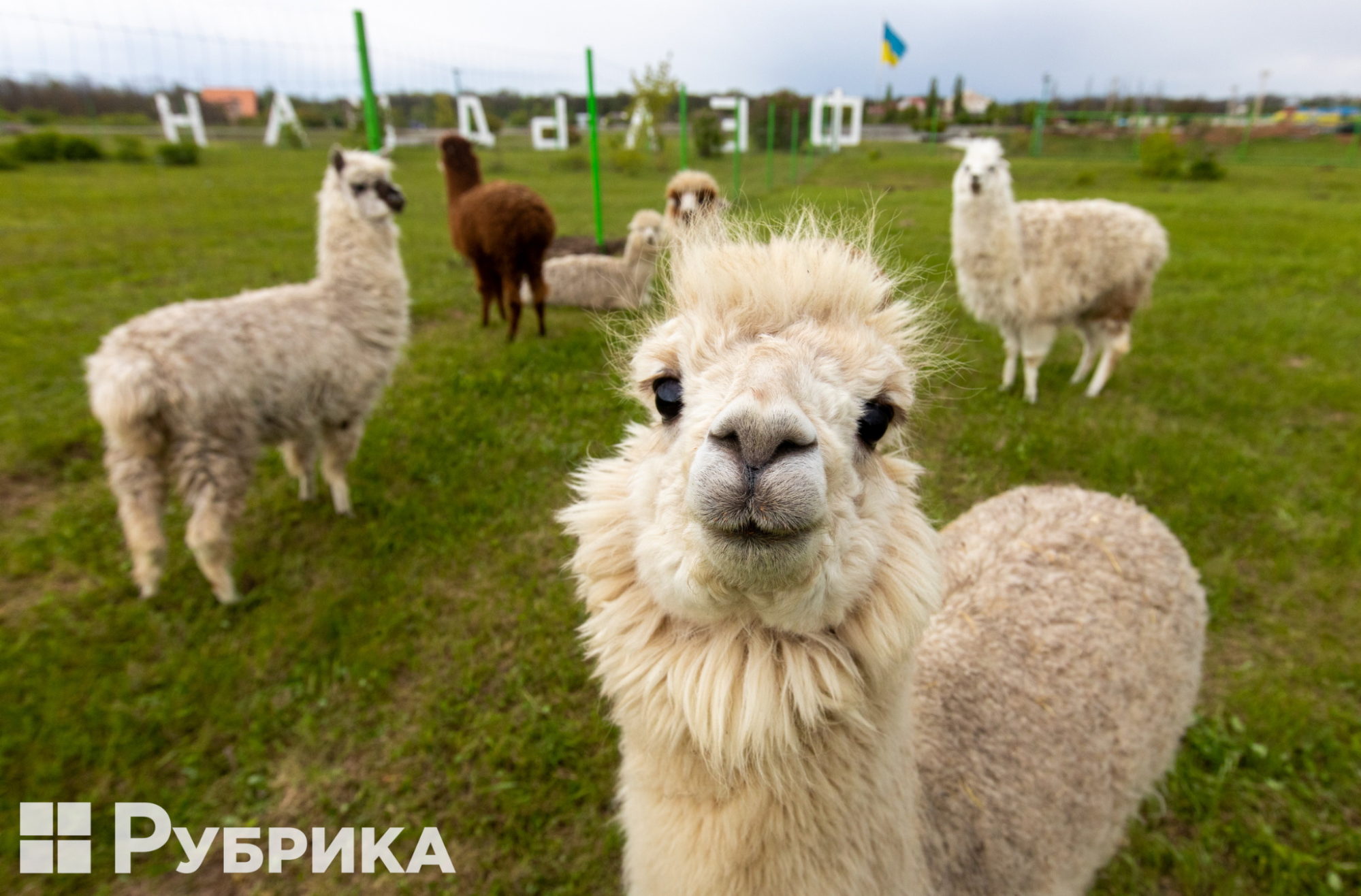
Llamas in Alpacas Valley like to pose, but you have to be careful: at any moment, the animals' protective mechanism can be activated, and the llamas can start spitting at visitors
Ungulates living in enclosures are not the only animals that have already returned. While Rubryka was exploring the destroyed part of the park, a local pheasant flew out of the bushes. Animals that managed to escape from the open enclosures on their own settled in the forests near the EcoPark. Now, if you look long enough, you can sometimes even see elk among the ruins, which were previously prepared for their return to the wild.
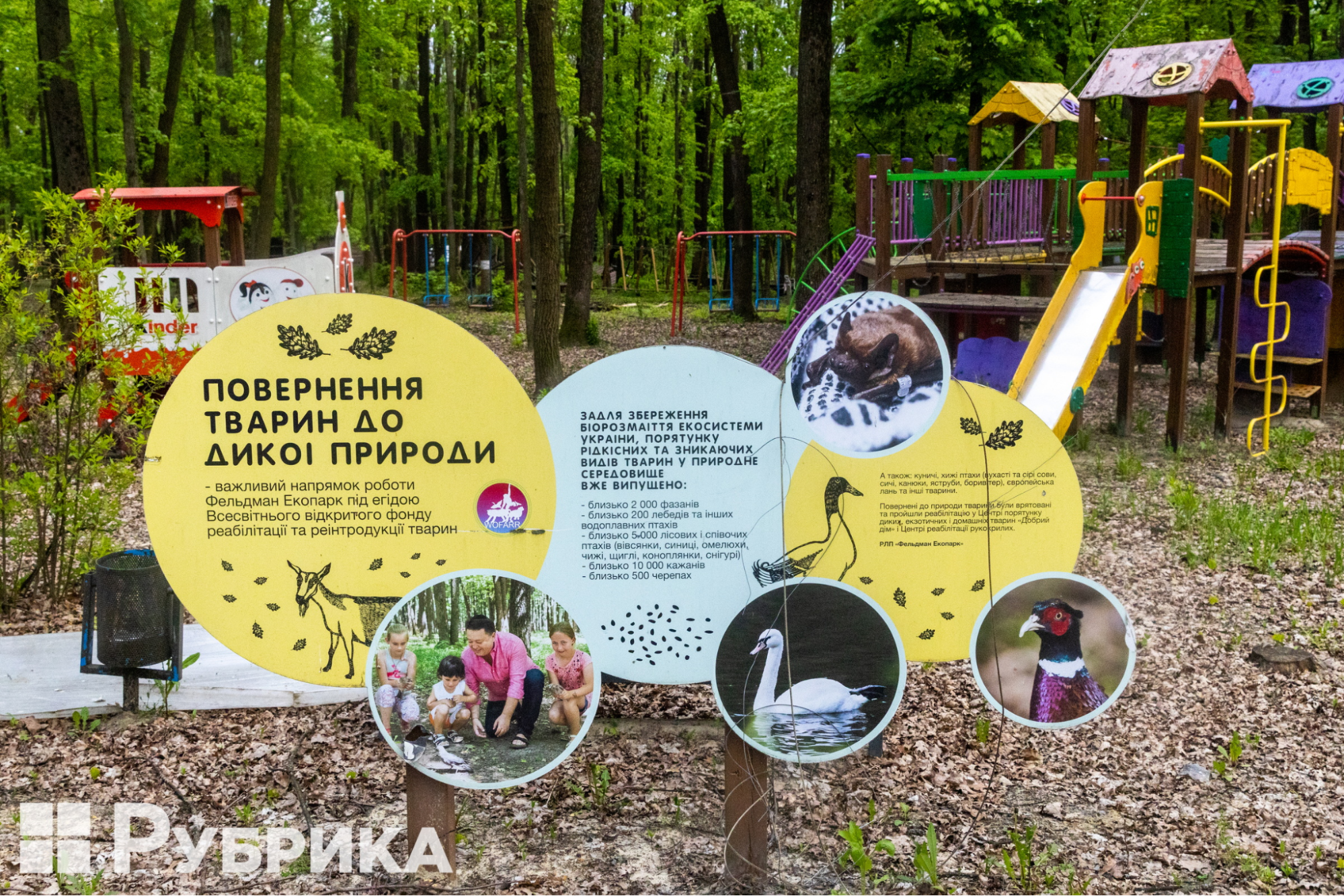
Some of the animals that lived in the Feldman EcoPark went through the rehabilitation process after treatment to be returned to the wild. This was stated on the information stand, which was miraculously undamaged in the affected part of the park
Restoration
The process of demining the territory on which the Valley of Alpacas will open, about five hectares, took about two weeks. The absence of trees there simplified the process, and now the area covered with green grass bears barely any trace the horrors that occurred here a year ago.
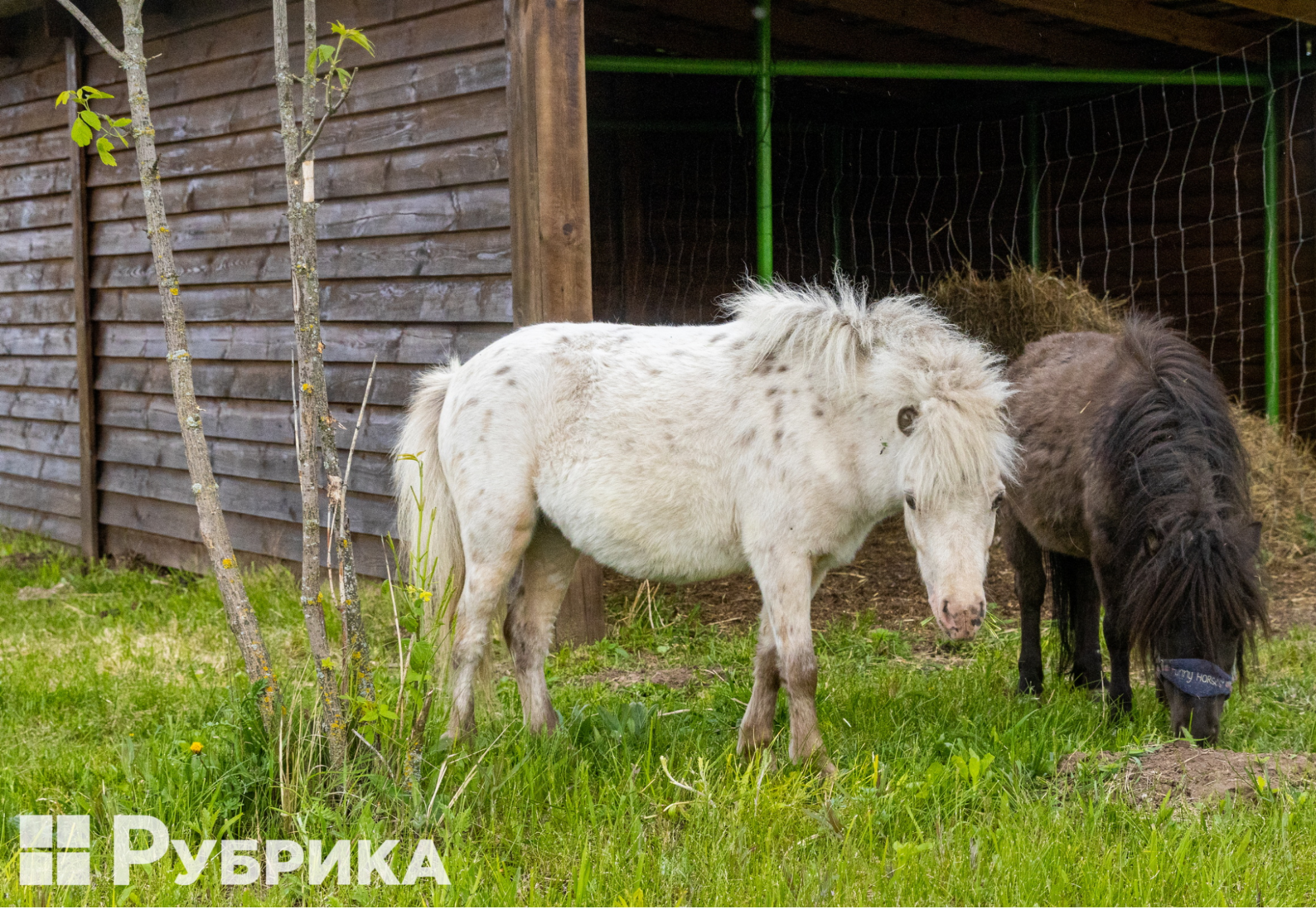
Horses that returned from evacuation to the restored part of Feldman EcoPark are calmly grazing
For now, this part of the park is closed to the public, but the animals are happy to welcome everyone who comes to them: horses, dwarf ponies, and goats, like puppies, run around waiting to get a carrot or an apple.
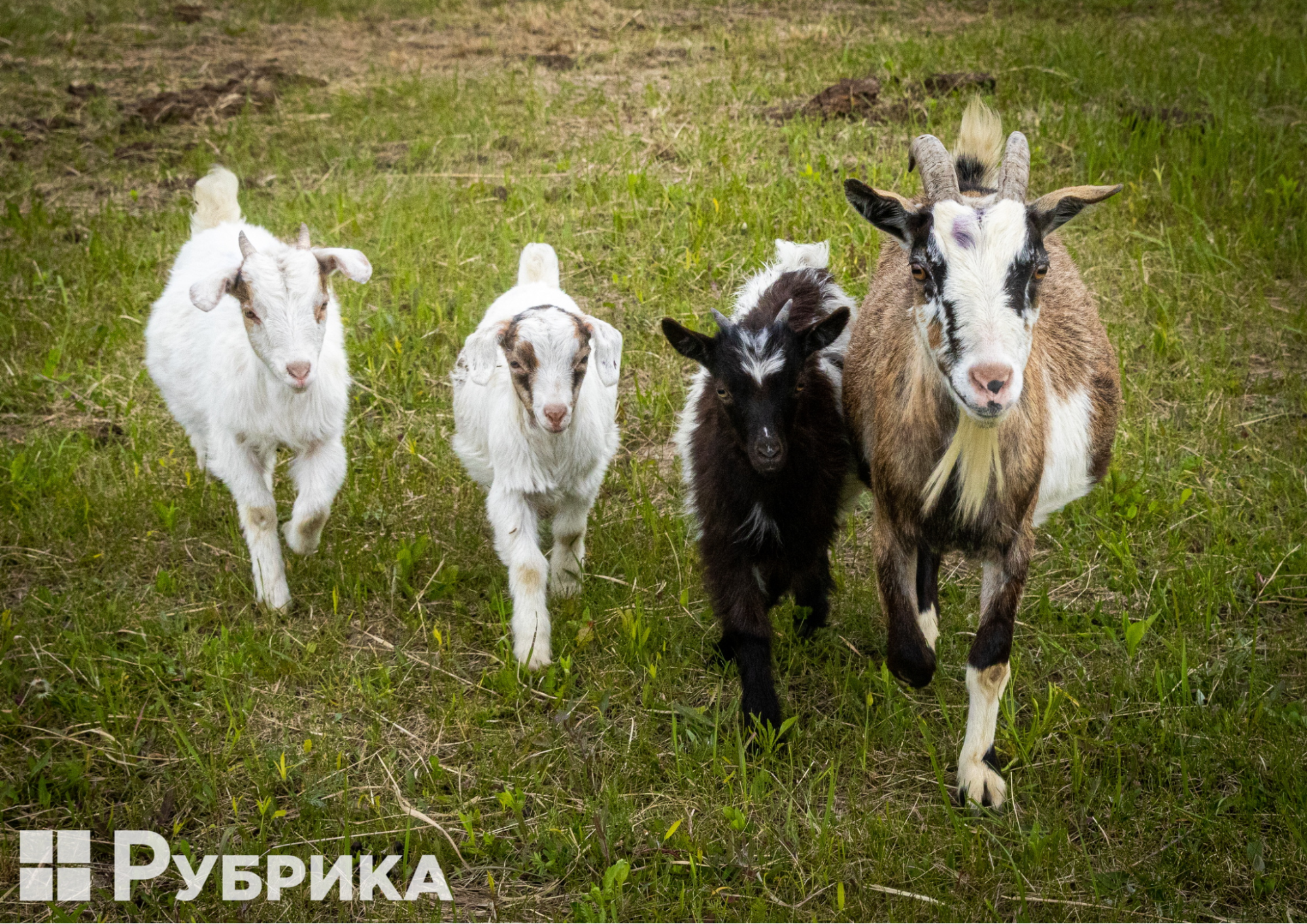
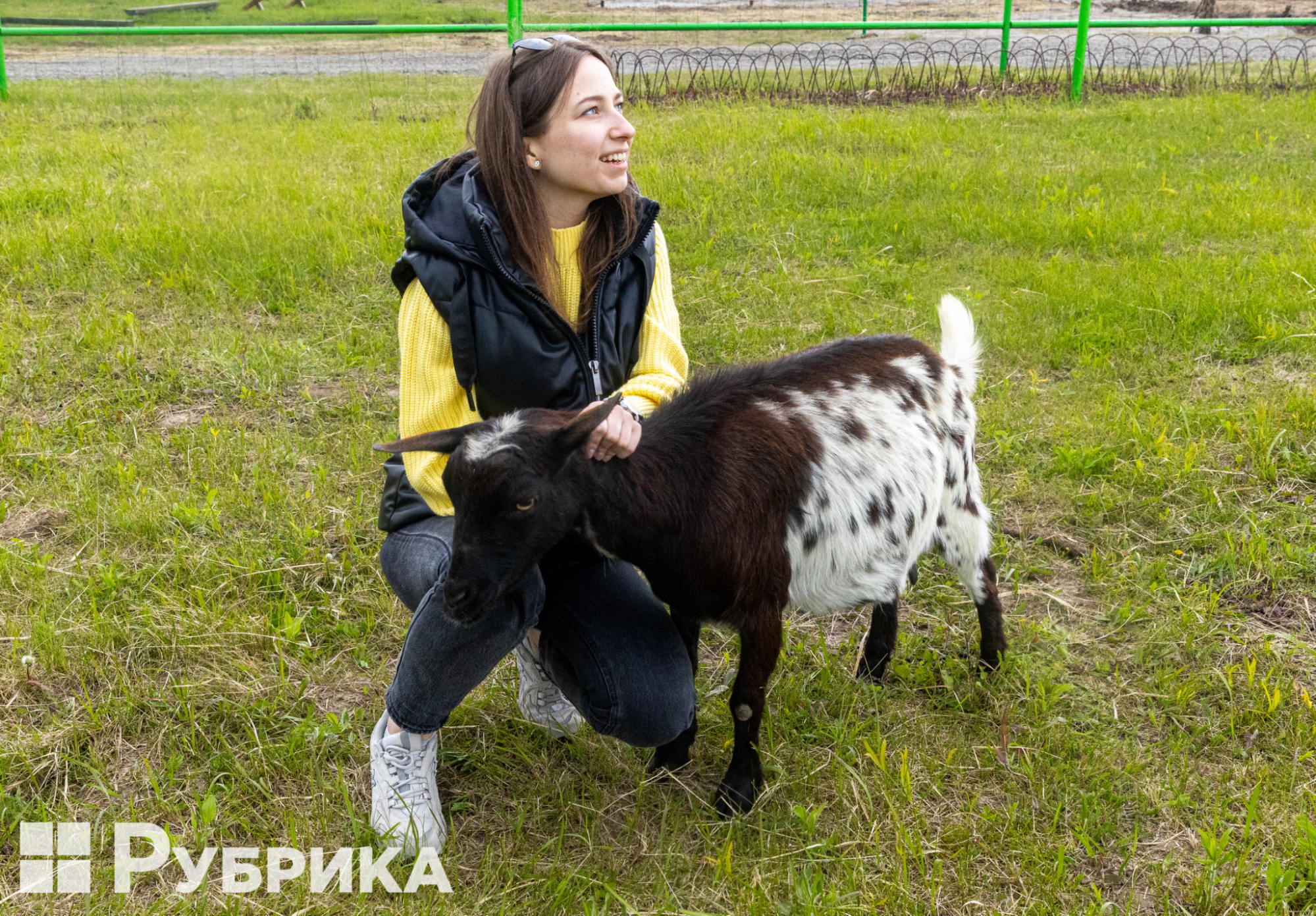
Goats and baby goats welcome visitors. Animals are socialized, so they constantly run to people in anticipation of treats
Over time, Vadym says, all the evacuated animals will return to EcoPark. However, for this, it is necessary to finish demining the park's entire territory. It is difficult to predict how long it will take – with an area of 140 hectares, everything depends on the capabilities of the explosives technicians. Compared to the Valley of the Alpacas, demining the main territory is more difficult because it has been subjected to more shelling and is mainly forested, which makes the process much more taxing.
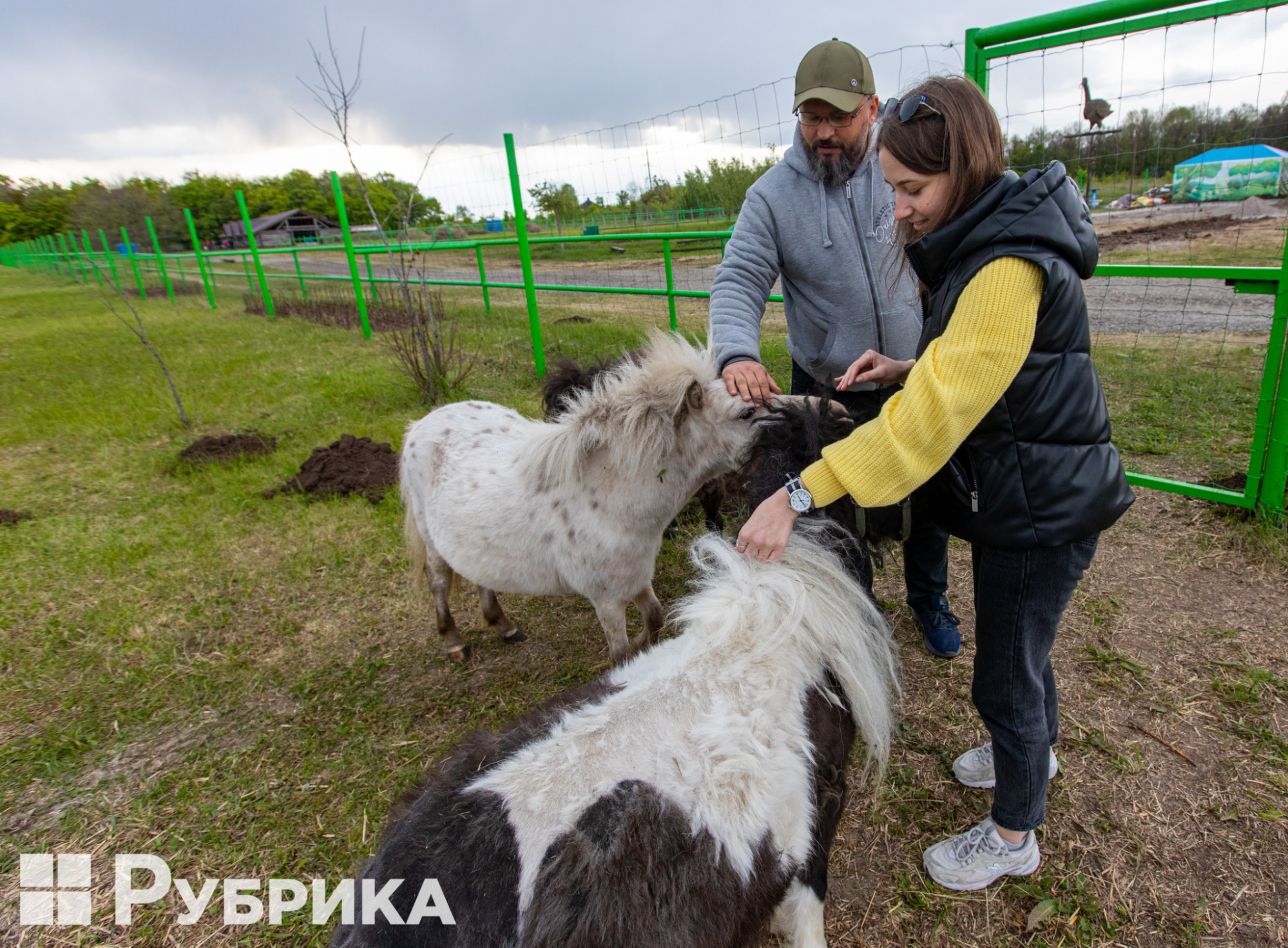
The process becomes much more pleasant if there is an opportunity to pet the animal during an interviewThe restoration of the EcoPark is ongoing. It involves the use of the most modern world developments, and promises some original solutions. In addition to the zoological collection, great attention is paid to creating a modern rehabilitation center to help people and animals affected by the war.
It is too early to say how long the work will take — it depends on the demining process and some other factors. The Valley of Alpacas was opened on June 1.
The way the EcoPark is being restored inspires hope. Even now, the first flower beds have already blossomed in the destroyed part. Against the background of the destroyed buildings of the park, they look surreal, but still, they give hope.
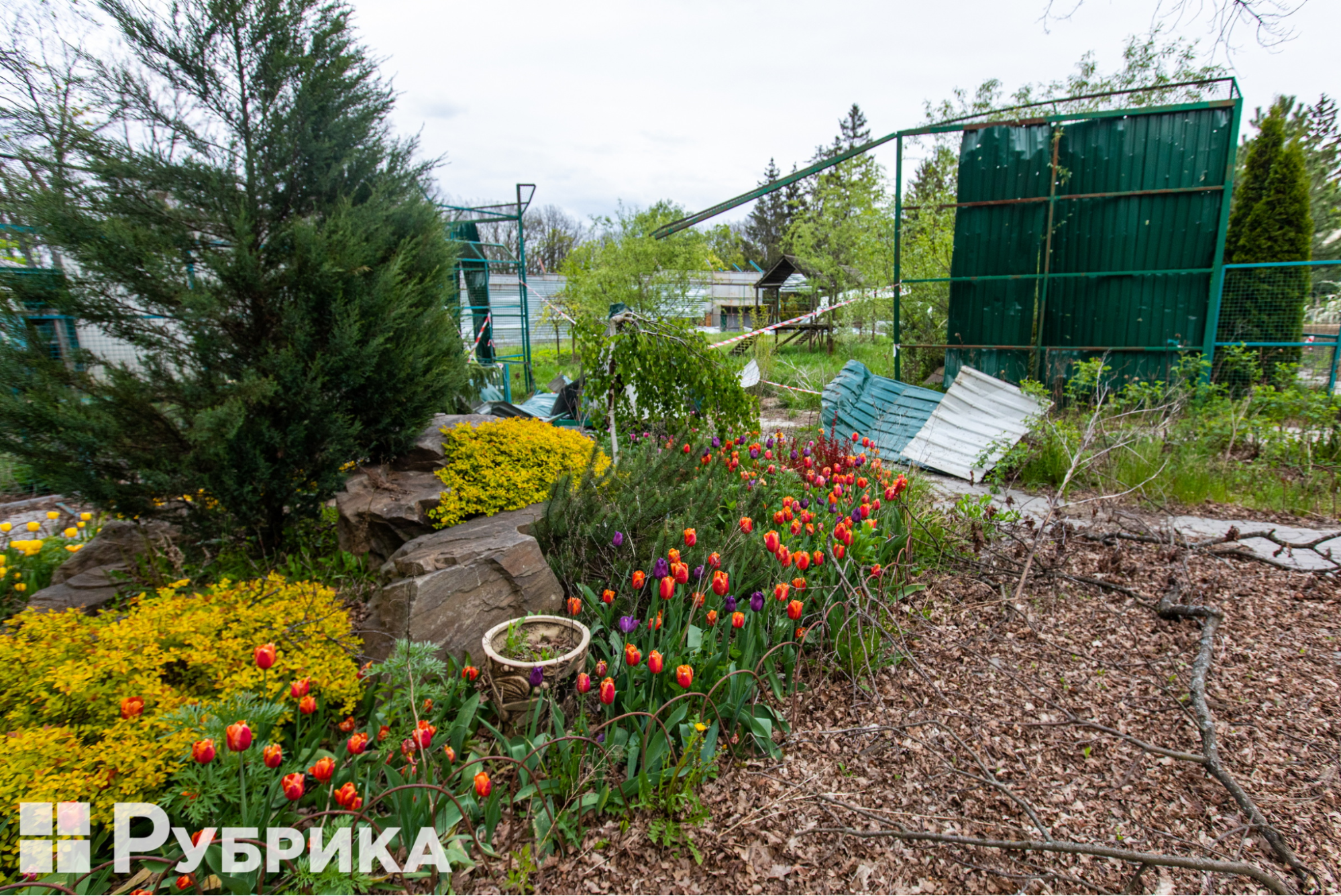
In the spring, arrangements of perennial plants bloomed in contrast with the ruins
War cannot destroy what Ukrainians have; thanks to courage and dedication, everything will surely recover and become even better.
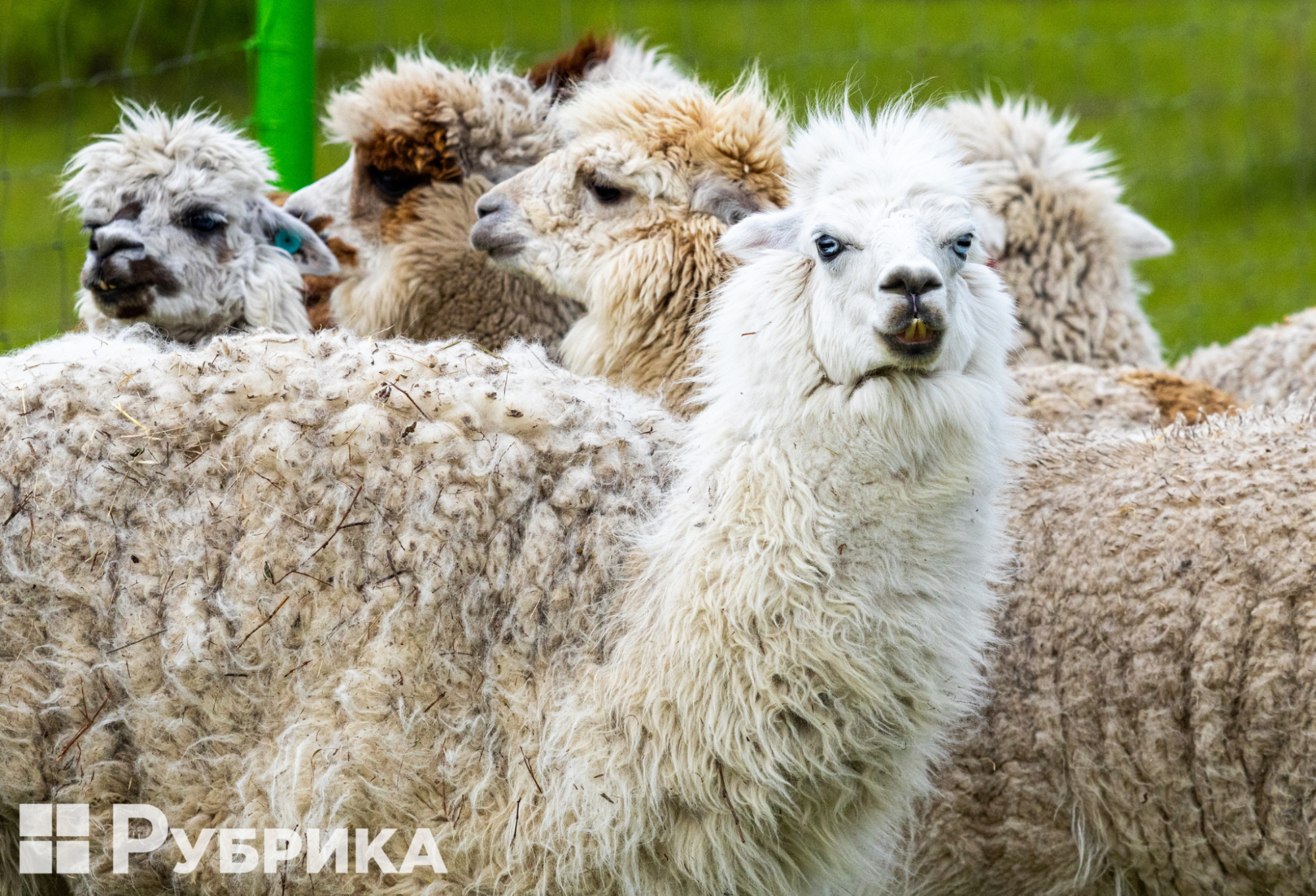
Residents of Valley of Alpacas of Feldman EcoPark are anticipating the visitors

Are the Russians destroying Dzharylhak National Nature Park?

Life of Askania-Nova natural reserve under Russian occupation and hopes about the future liberation: Interview with director Viktor Shapoval



